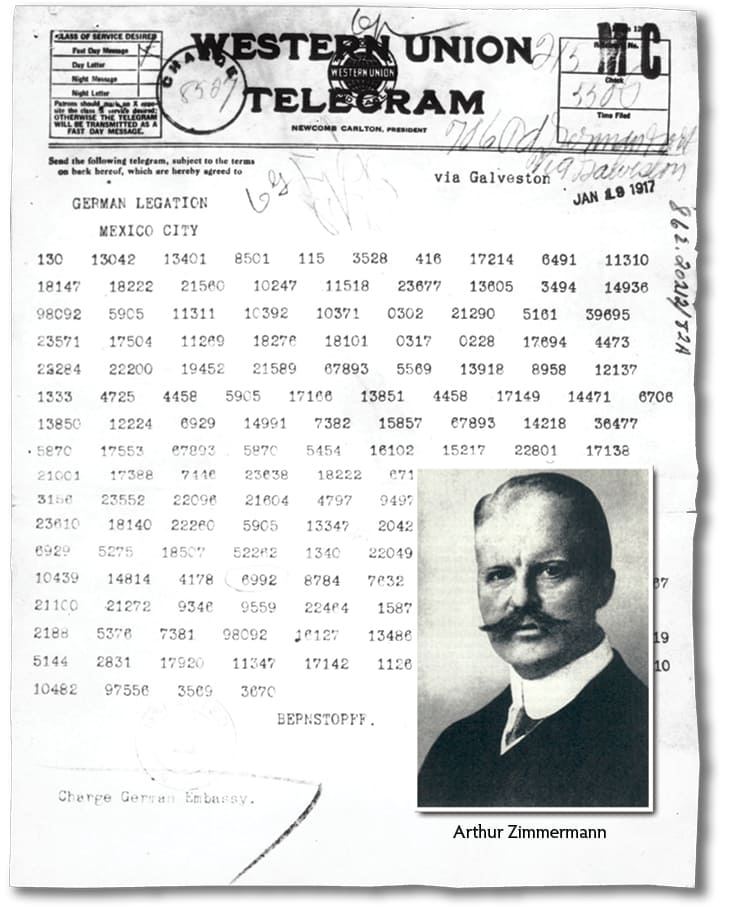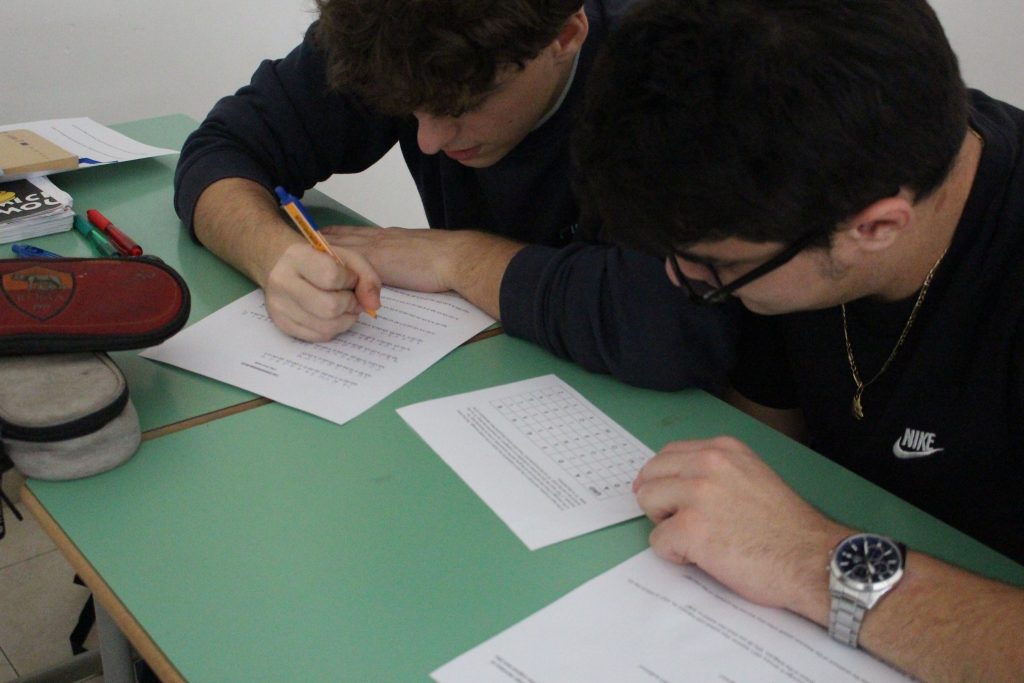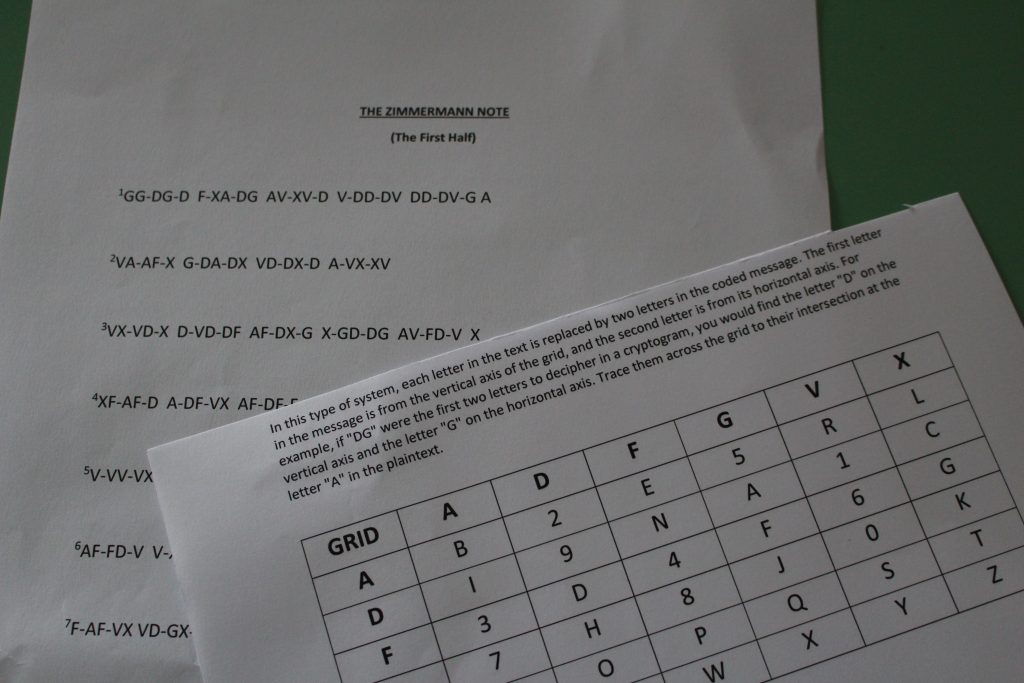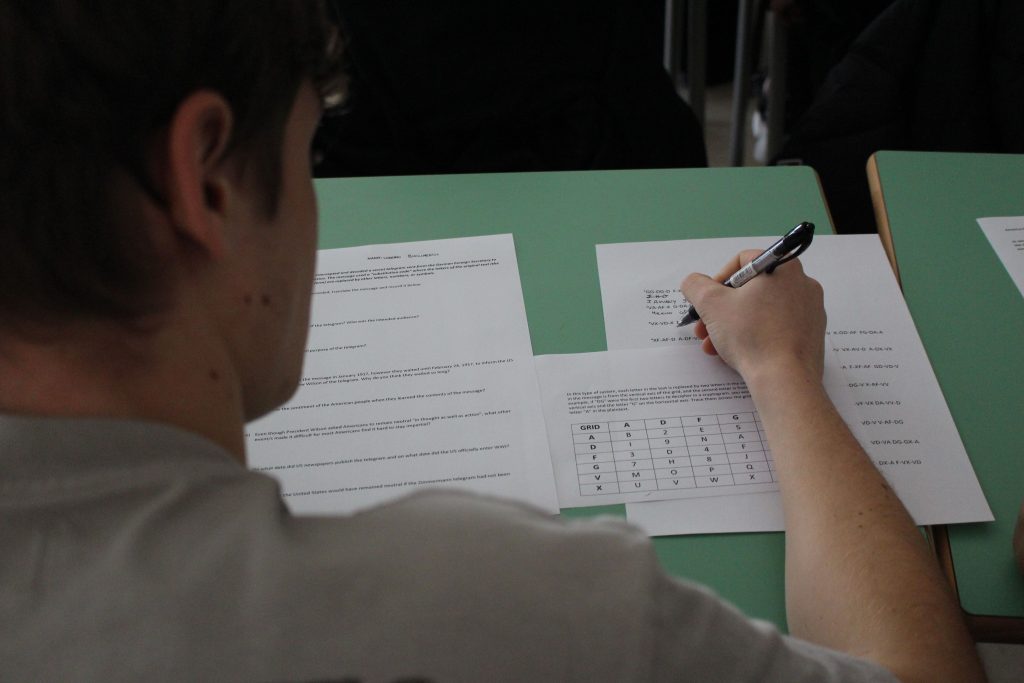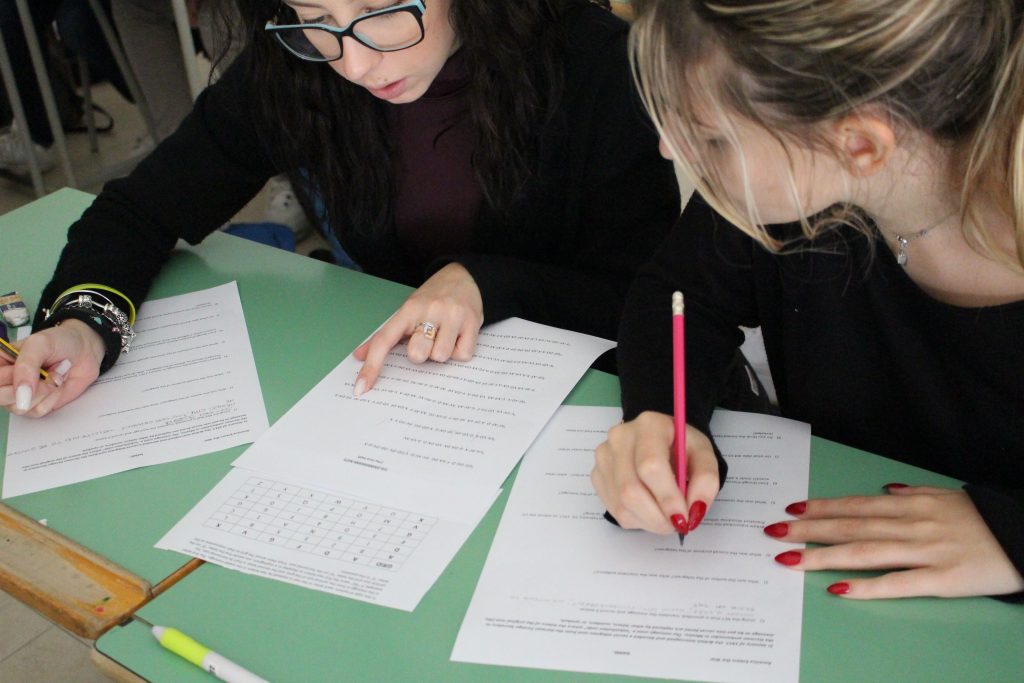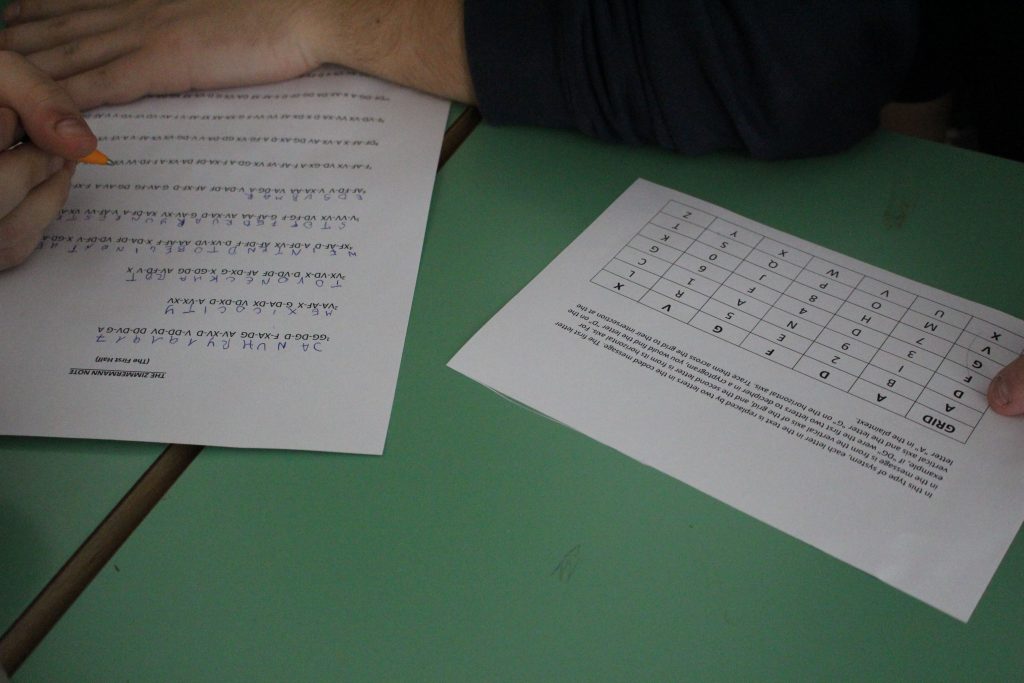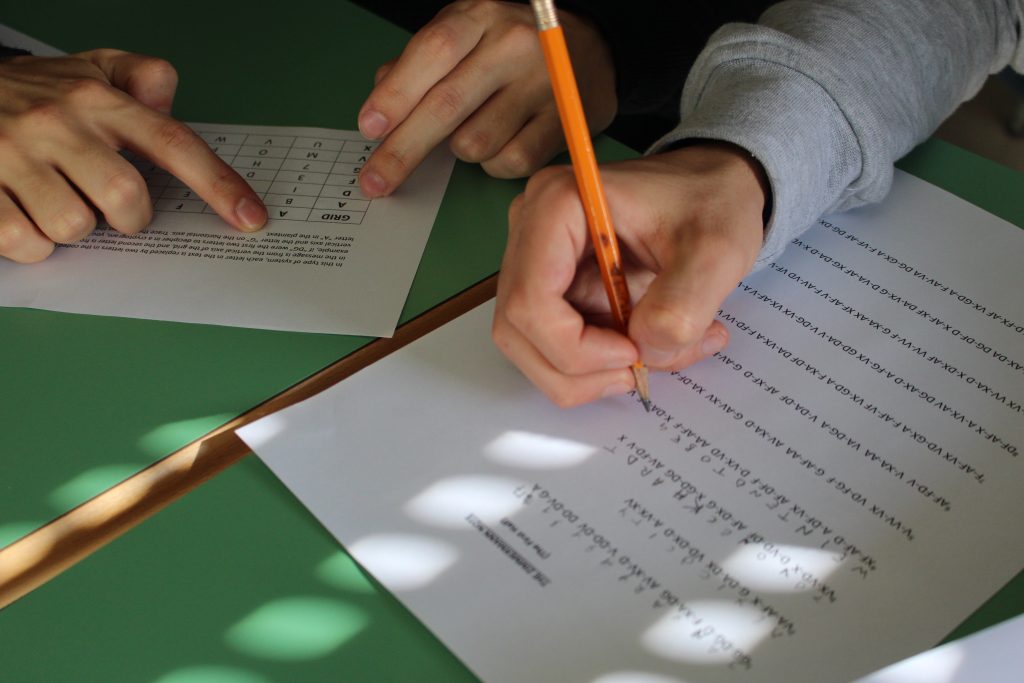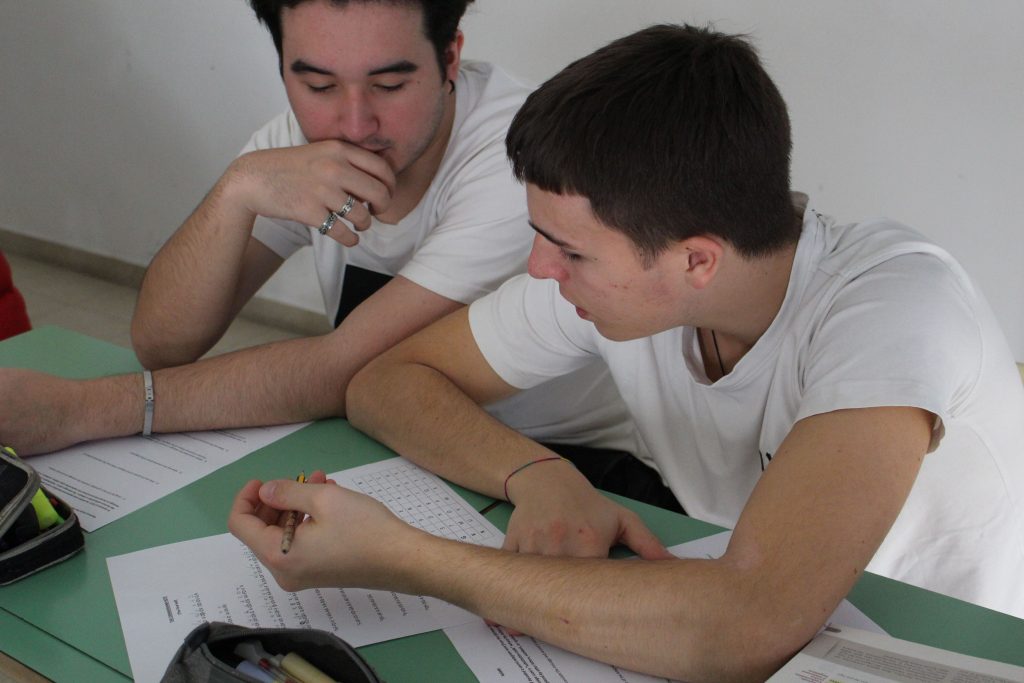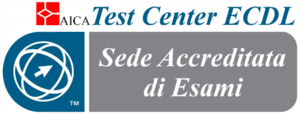The mole is a scientific unit of measurement which corresponds to the mass of a substance containing 6.023 x 10²³ particles of that substance.
Our budding first year scientists put their names on the line for this experiment. We wanted to test the theory that it’s possible to find the number of moles in each students’ name. Using the simple technique of finding the mass of calcium carbonate (CaCO3), otherwise known as chalk, both before and after writing their names on paper, our students were able to deduct how much chalk was consumed and with some quick calculations, we found our answer. Each student had a different answer depending on how much chalk they used for their signature.
La mole è un unità di misura fondamentale della quantità di materia ed esprime un determinato numero di particelle indicato dal numero di Avogadro: 6.023 x 10²³! I ragazzi del primo Liceo Scientifico hanno contato quante moli ci sono nel loro nome, calcolando la massa di gesso (carbonato di calcio) utilizzata per scrivere il loro nome. L’applicazione di una semplice formula ha permesso loro di sapere quante molecole di carbonato di calcio, e quindi quante moli, ci sono nel loro nome!
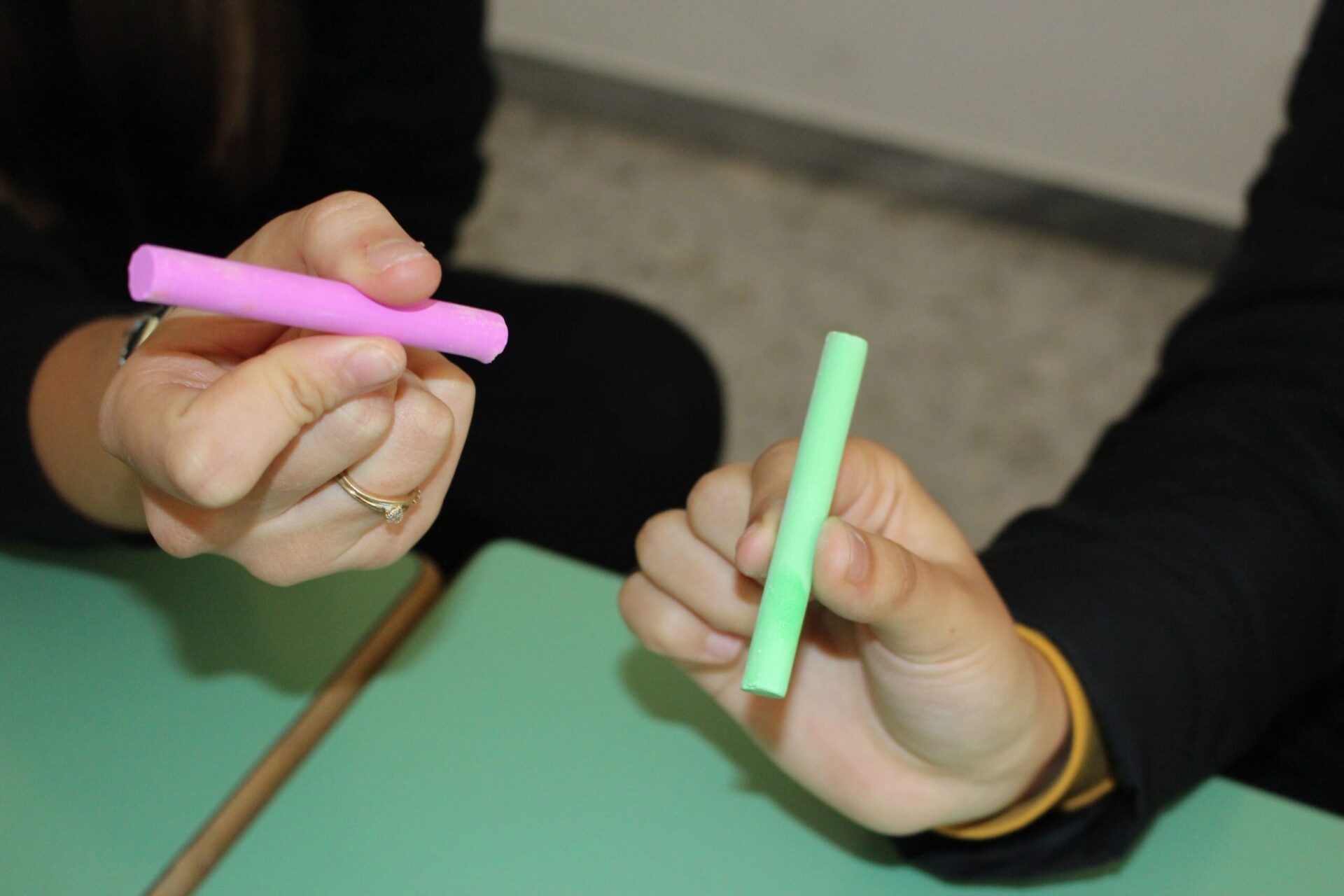
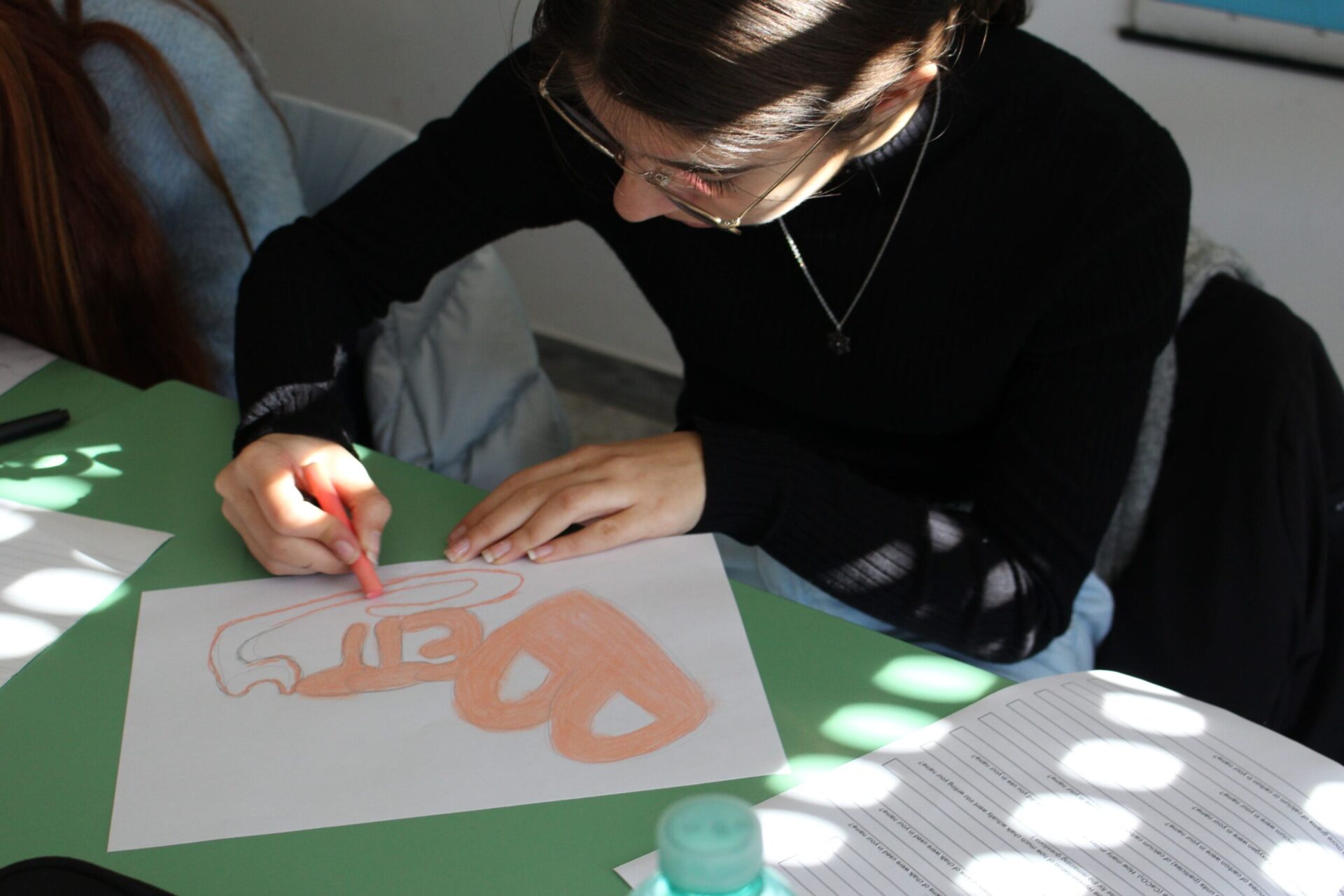
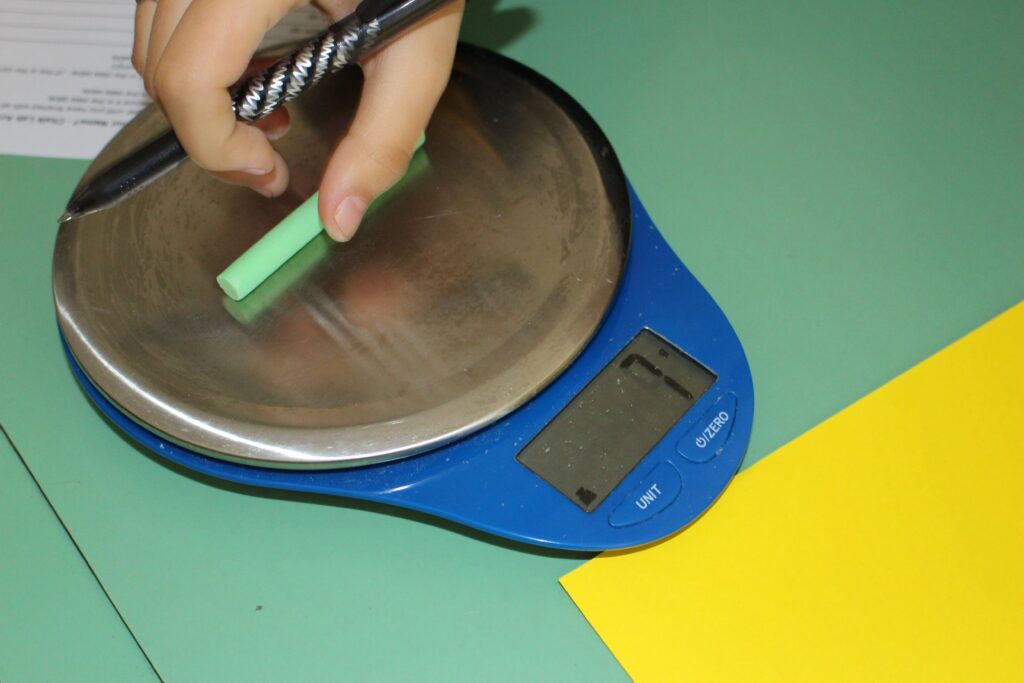
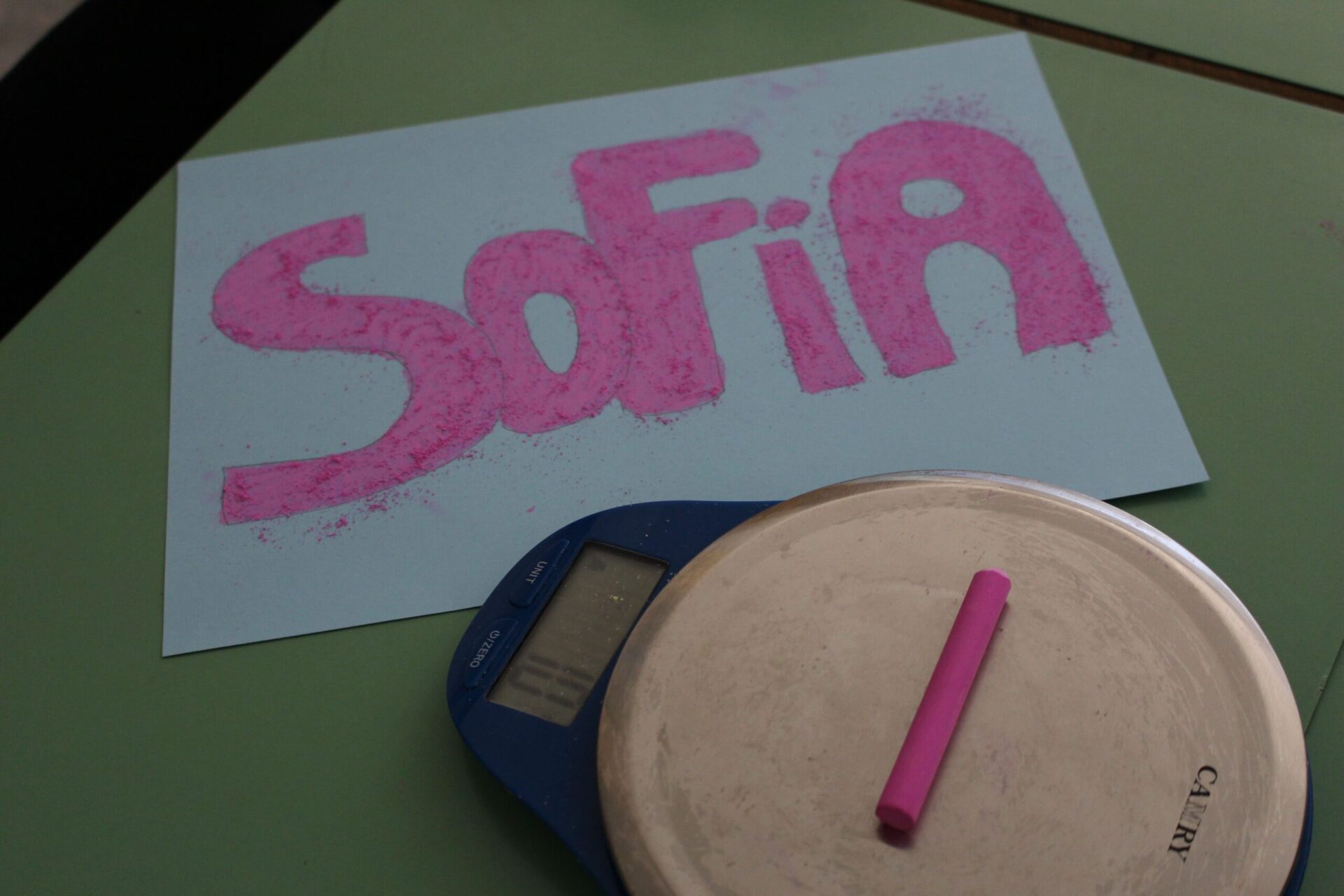
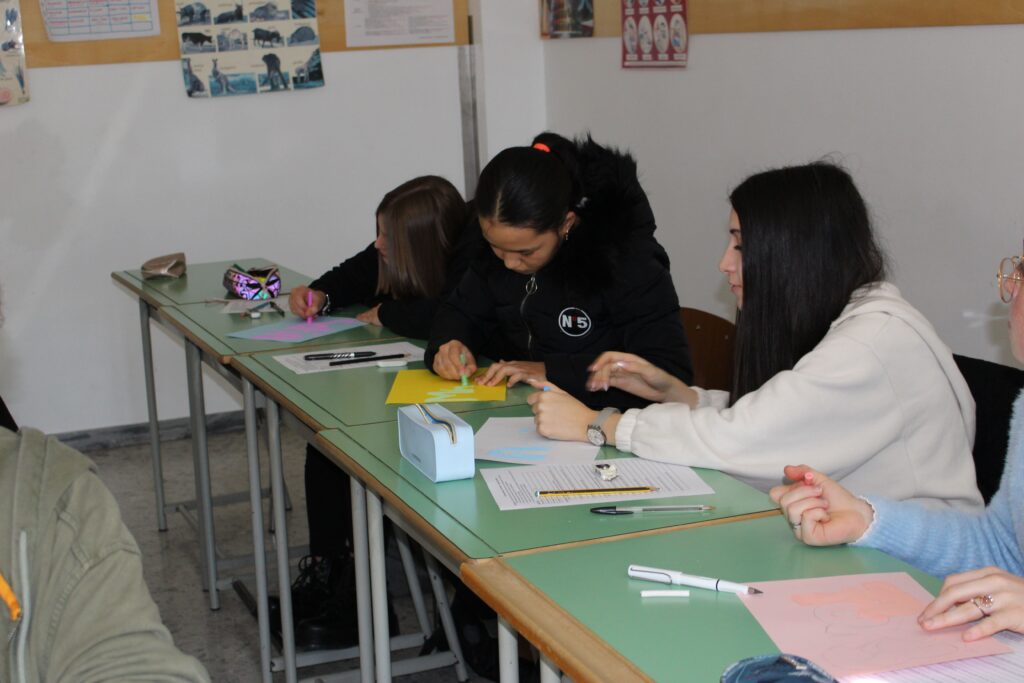
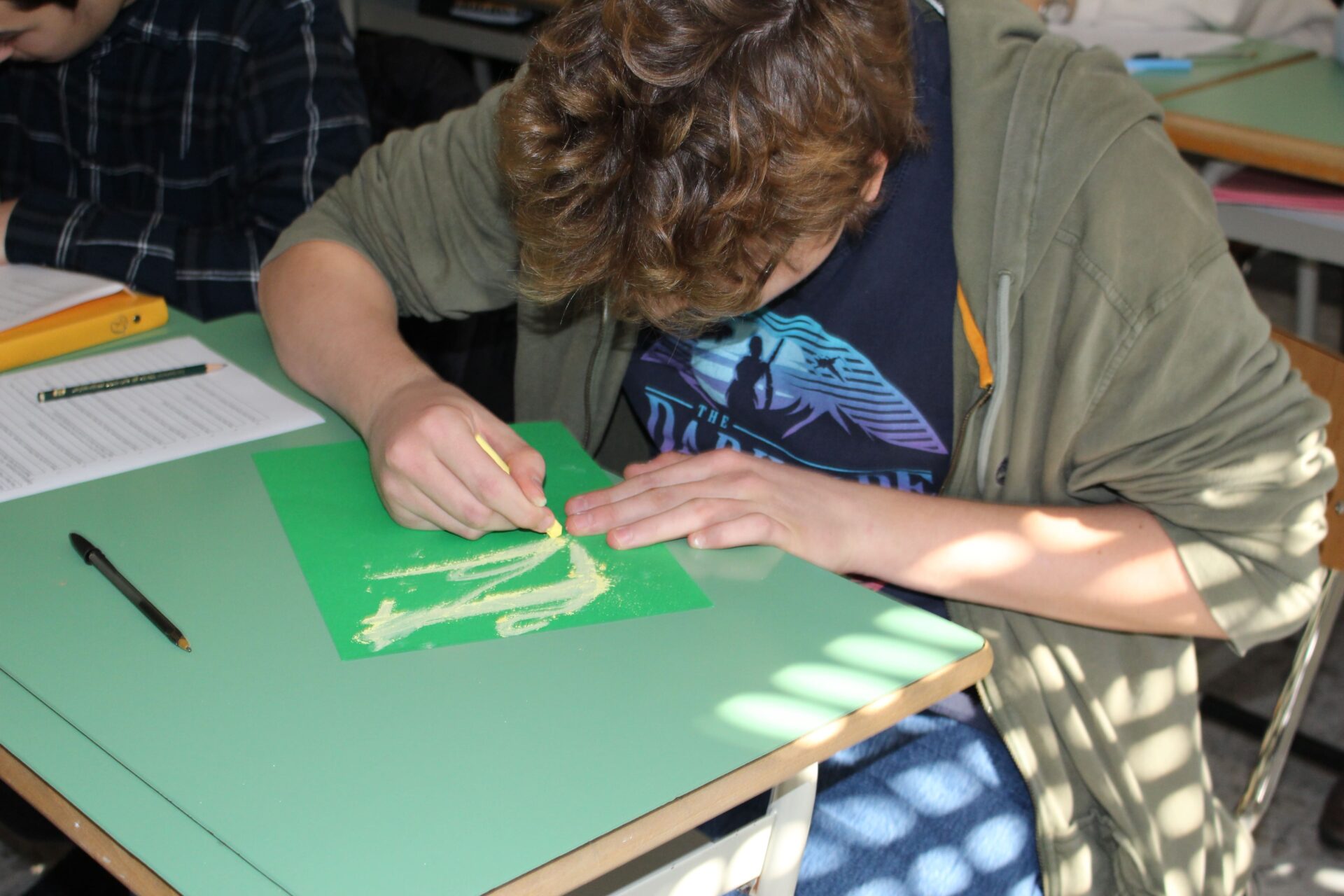
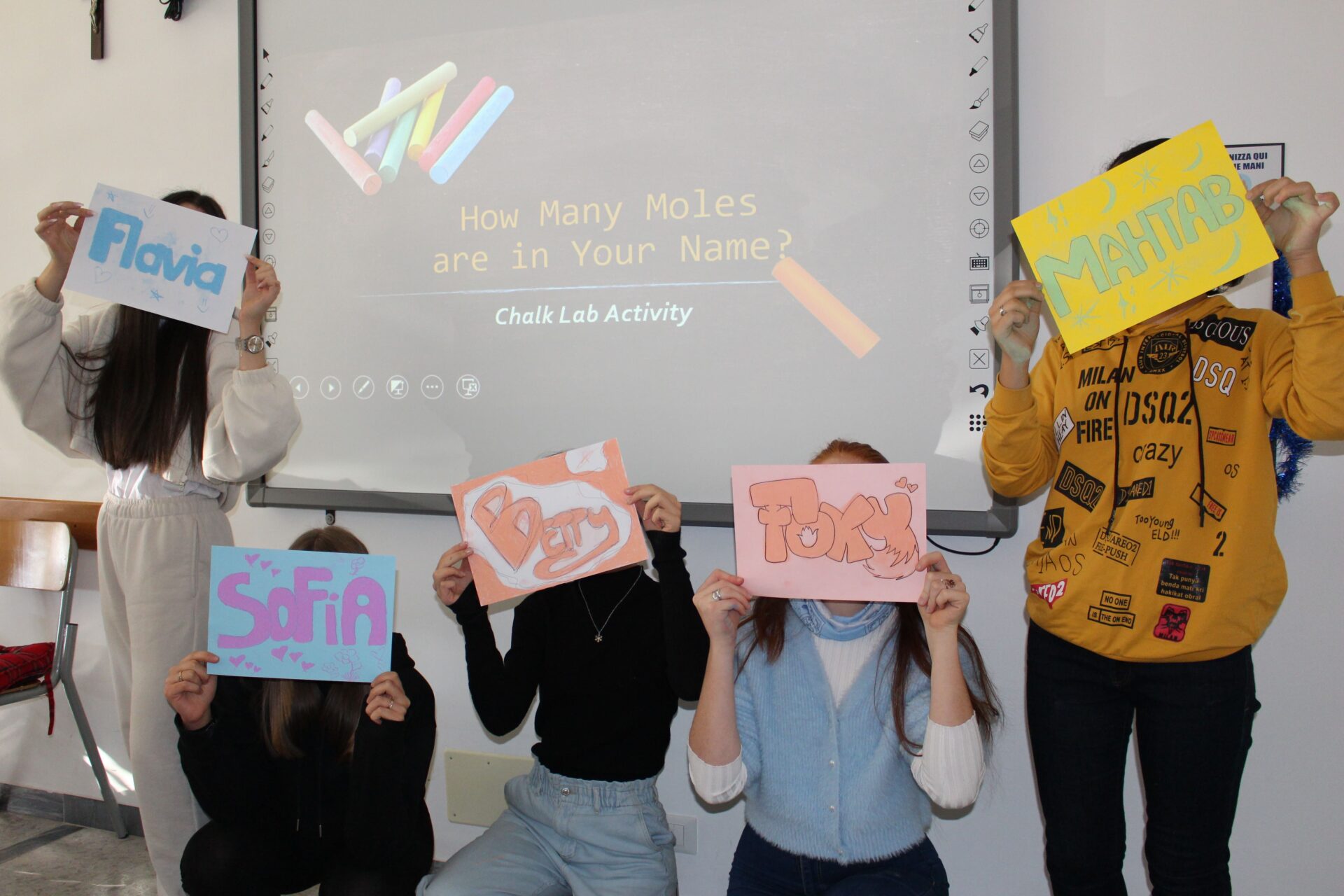
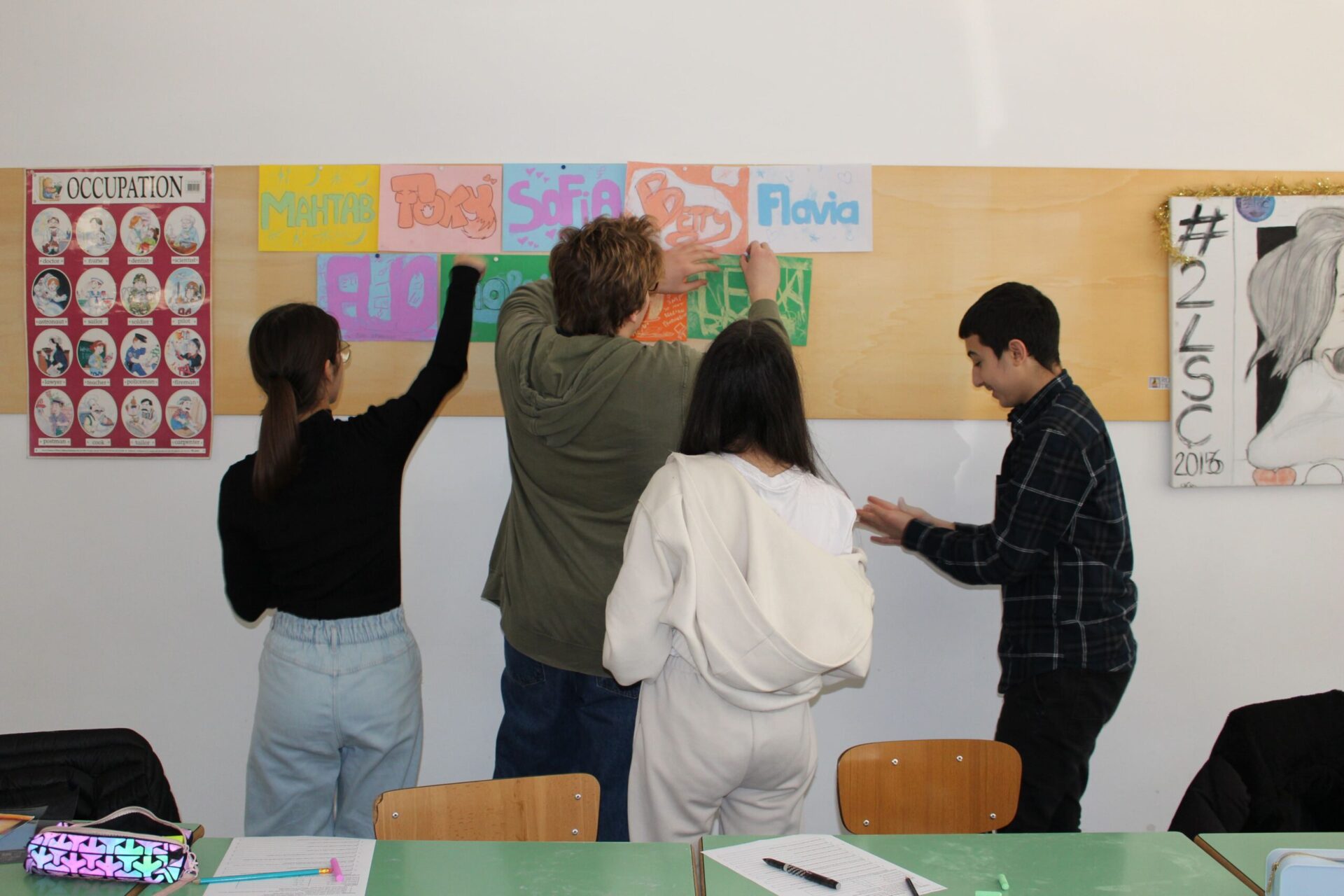
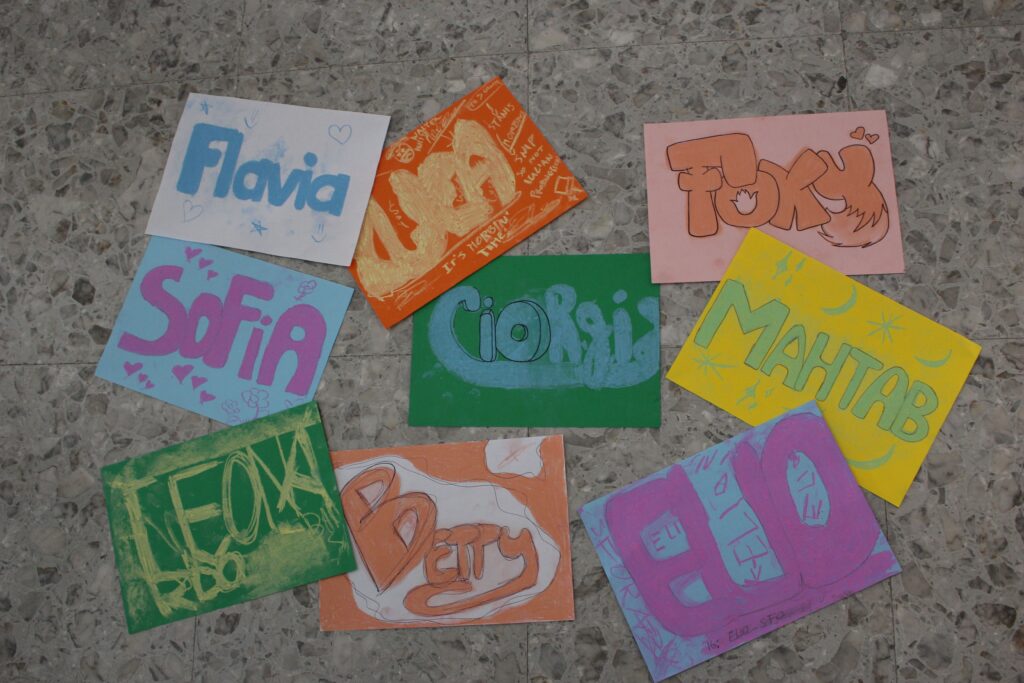
Vi siete mai chiesti come una quercia alta decine di metri possa “bere” l’acqua del suolo? La risposta è facile…grazie alla capillarità, la capacità dell’acqua di risalire tubicini di piccolo diametro percorrendo grandi distanze contro la forza di gravità. Sfruttando questa incredibile proprietà gli studenti del 2° Liceo Scientifico hanno “colorato” i petali di fiori bianchi immersi in acqua colorata di rosso, rendendo il nostro laboratorio scientifico ancora più bello!
Is it really possible to transform a white flower into a red one? It may seem like a party trick but even our 2nd year Scientific High School students got in on the colour changing action. Equipped with bouquets of simple white flowers they explored how the scientific phenomenon called “capillary action” works. Thanks to water’s unique properties of adhesion and cohesion, water (in our case, coloured water) moves upward through a type of tissue called the xylem. This water is carried through the stem, leaves and even petals of the flower causing a miraculous and colourful metamorphosis.
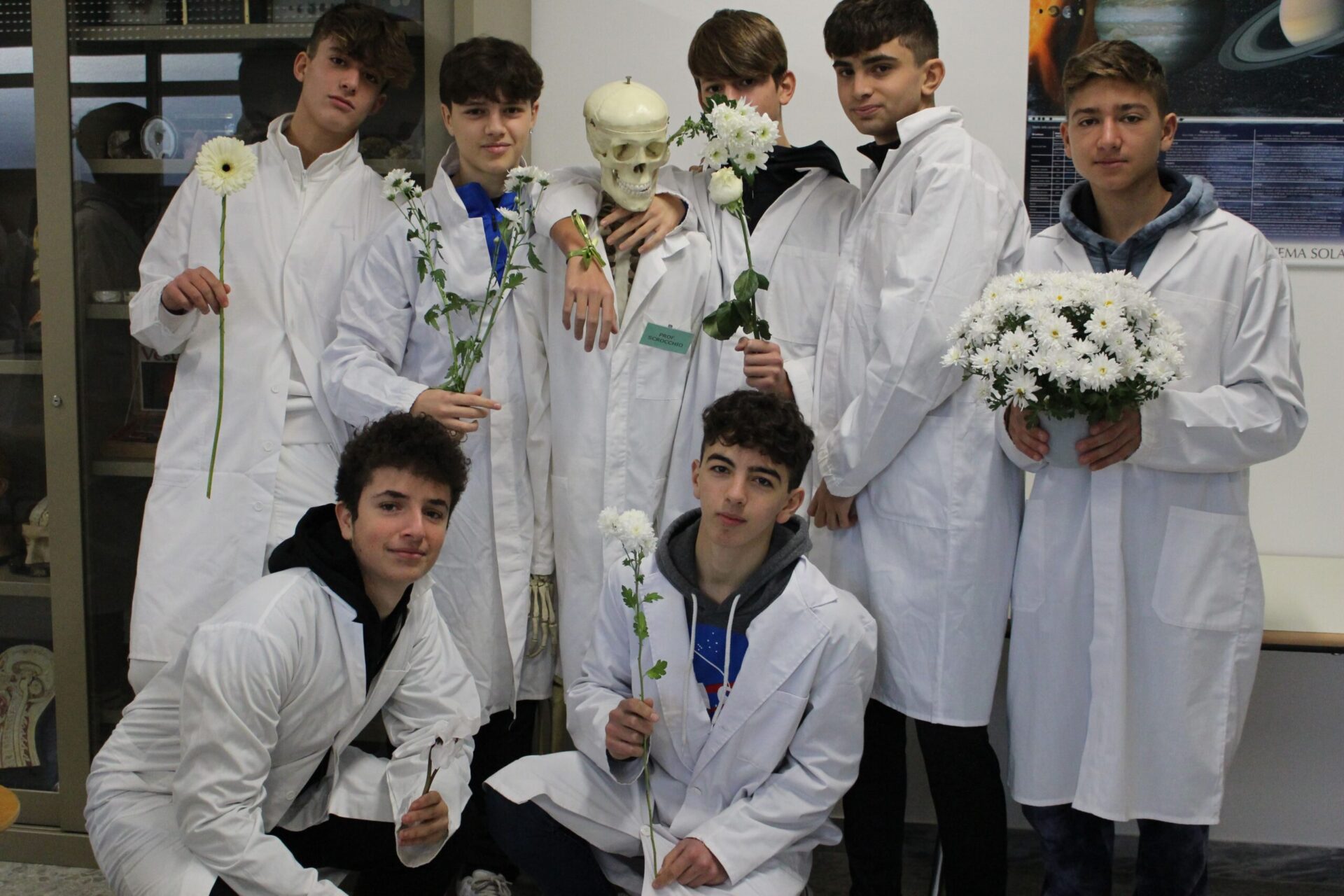

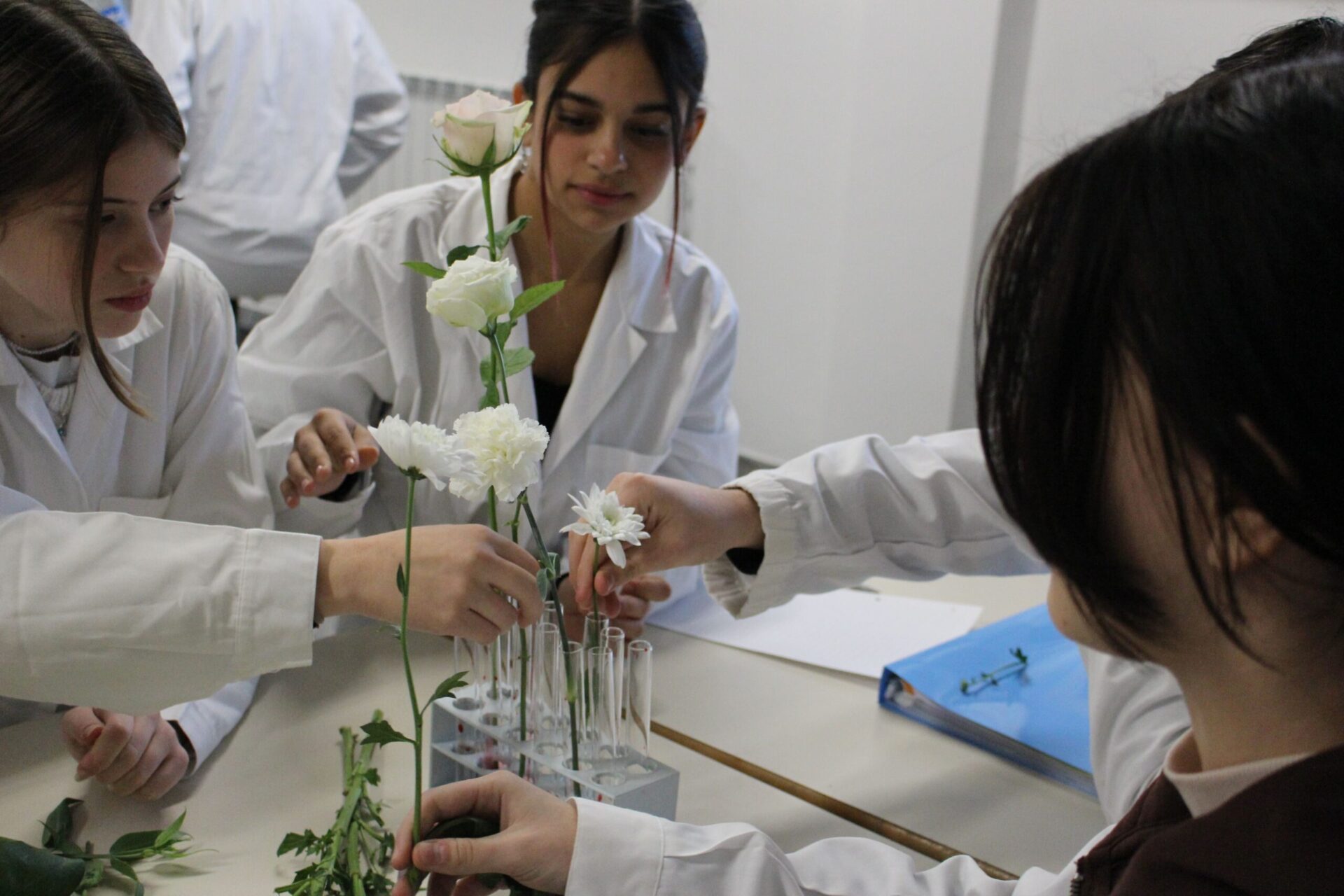
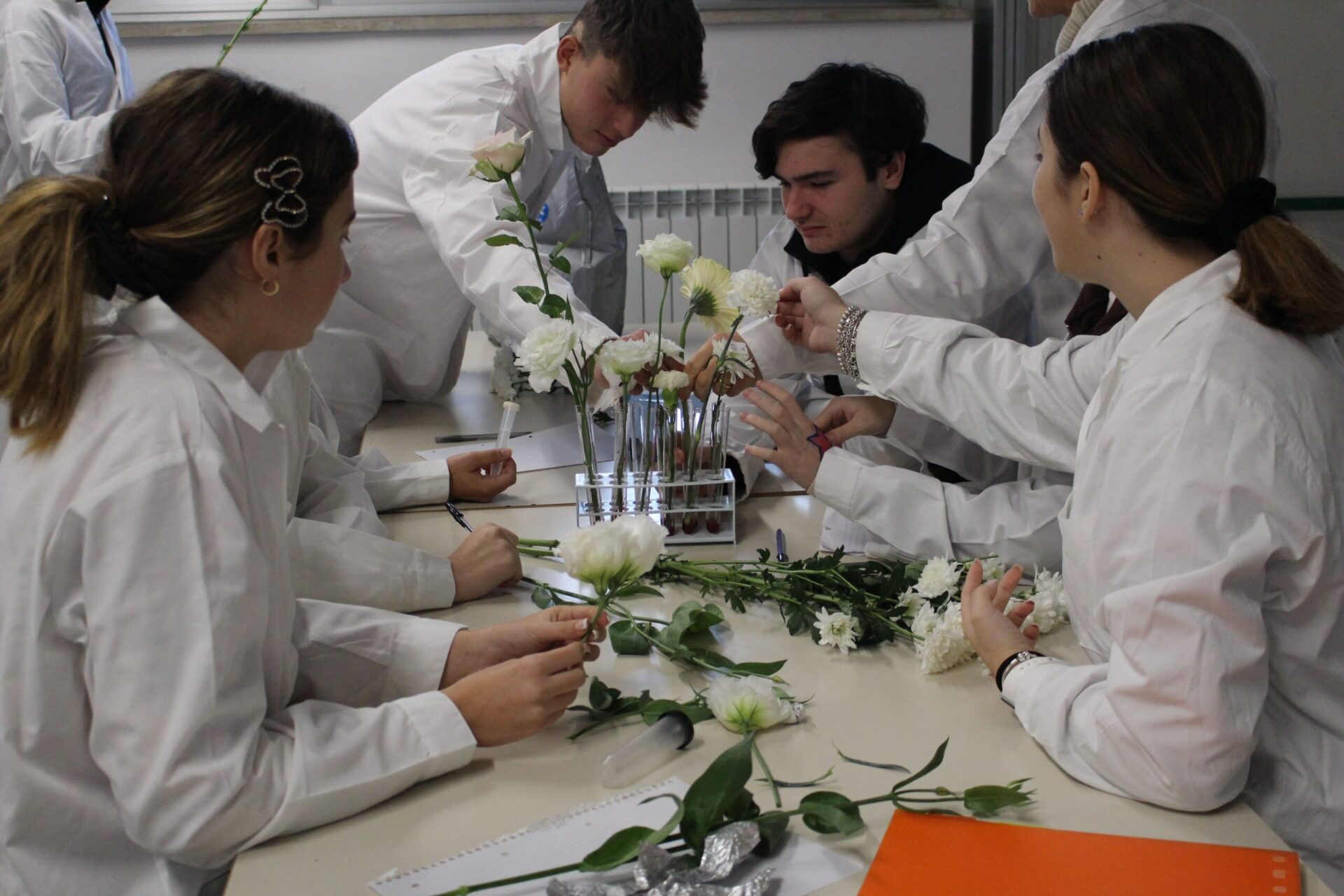
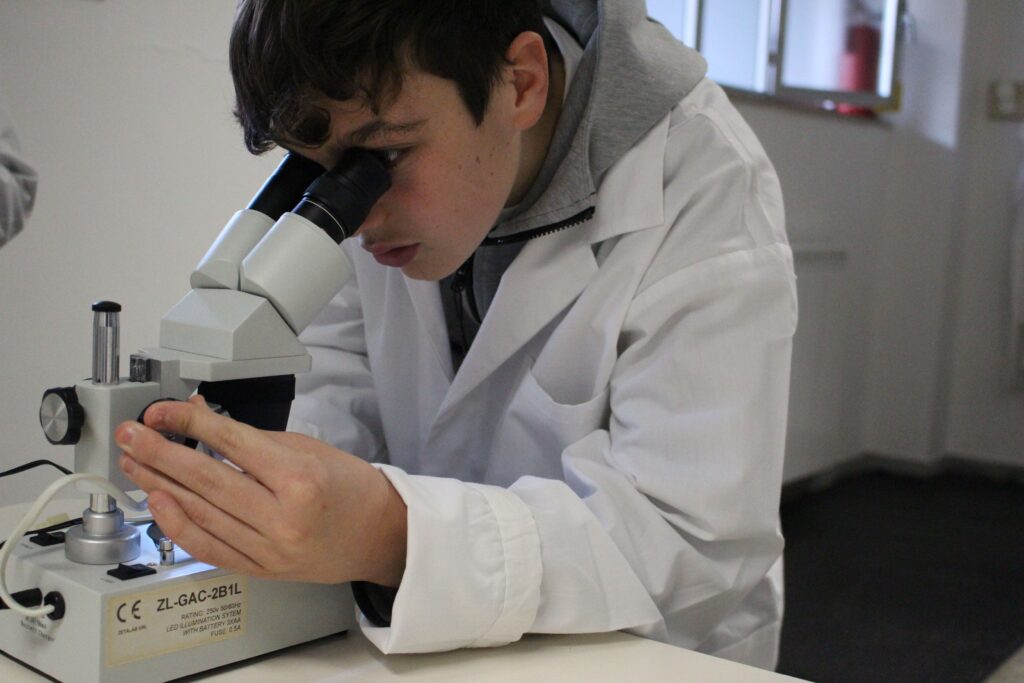
L’Osmosi è un processo spontaneo durante il quale l’acqua si muove da una soluzione più concentrata a una soluzione più diluita. I ragazzi del 4° Liceo Scientifico hanno osservato questo fenomeno immergendo una foglia di insalata in acqua salata confrontandola con una immersa in acqua distillata. Il risultato è stato evidente! Per osmosi, l’acqua contenuta nelle cellule della prima foglia si è spostata verso l’acqua salata rendendo la foglia “floscia” e rimpicciolita!
Osmosis provides the primary means by which water is transported into and out of cells. Water naturally moves from areas of low salt concentrations to areas of high salt concentrations. By submerging two leaves of lettuce in water (one in fresh water and the other in salt water) our 4th year Scientific High School students were able to observe this process first hand. The first leaf of lettuce immersed in fresh water maintained its form and size, while the second leaf, immersed in the salt water began to show the effects of osmosis after a short time. The water contained in the leaf of lettuce began to migrate out toward the salt solution leaving the lettuce leaf wilted and shrunken in size.
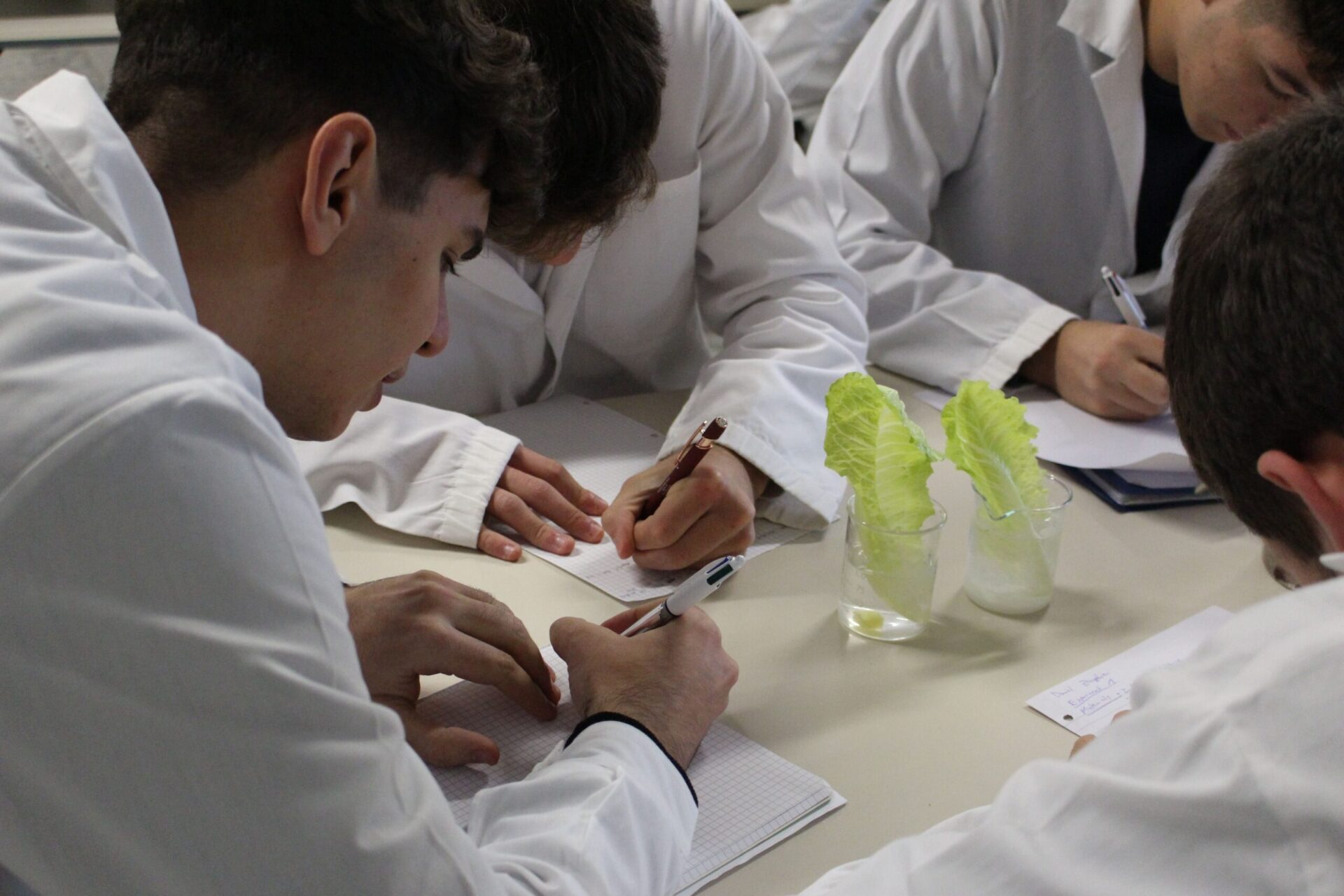
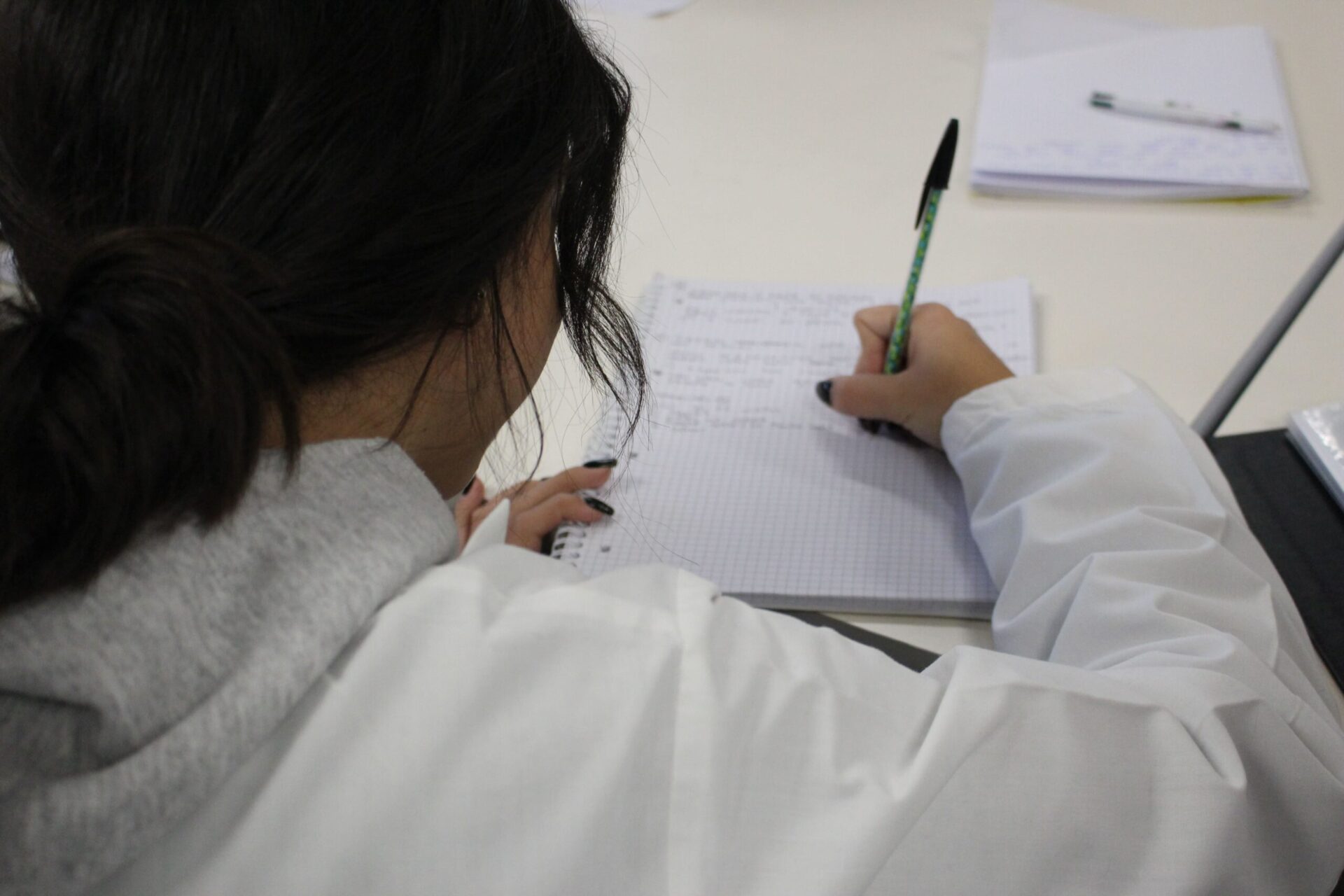
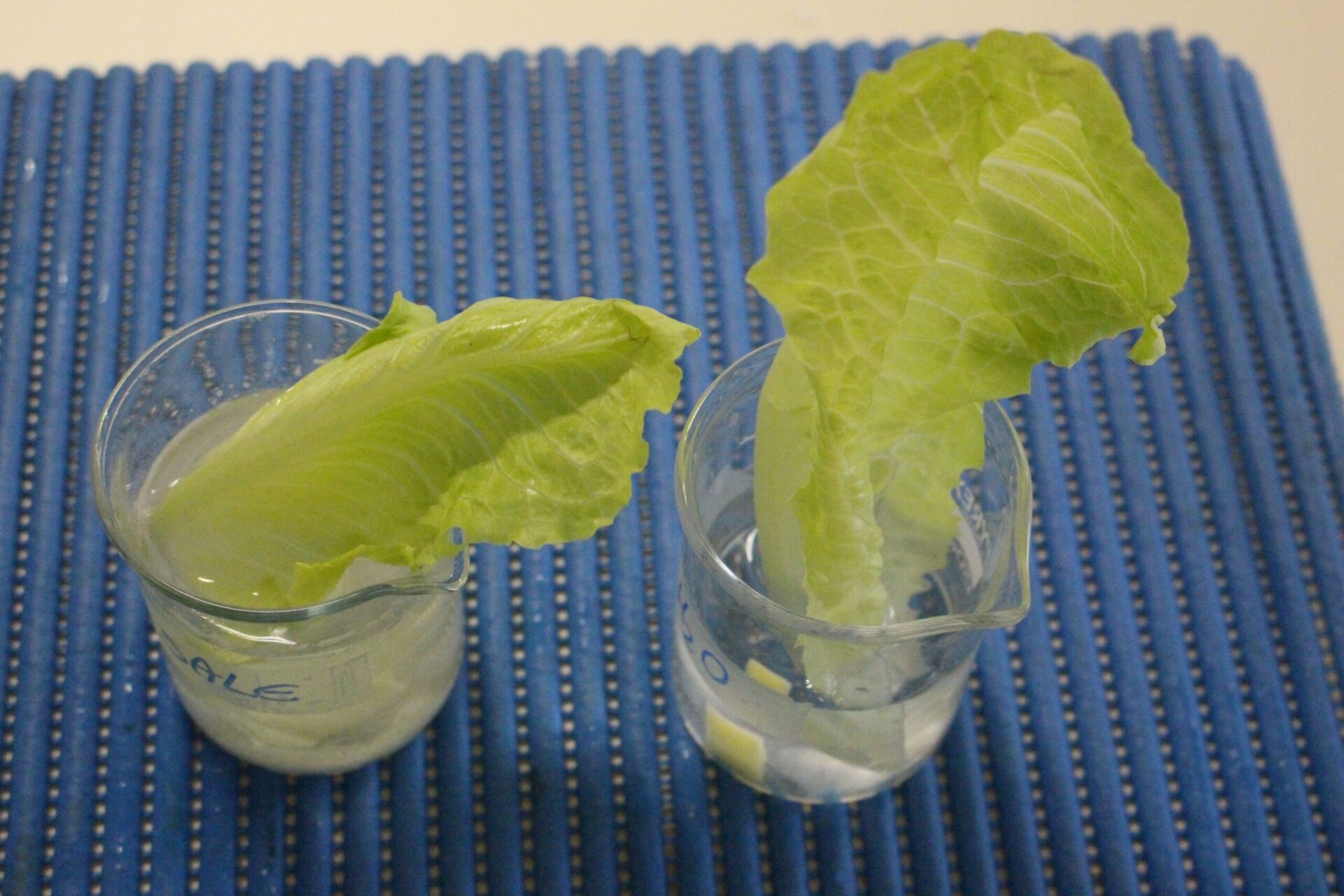
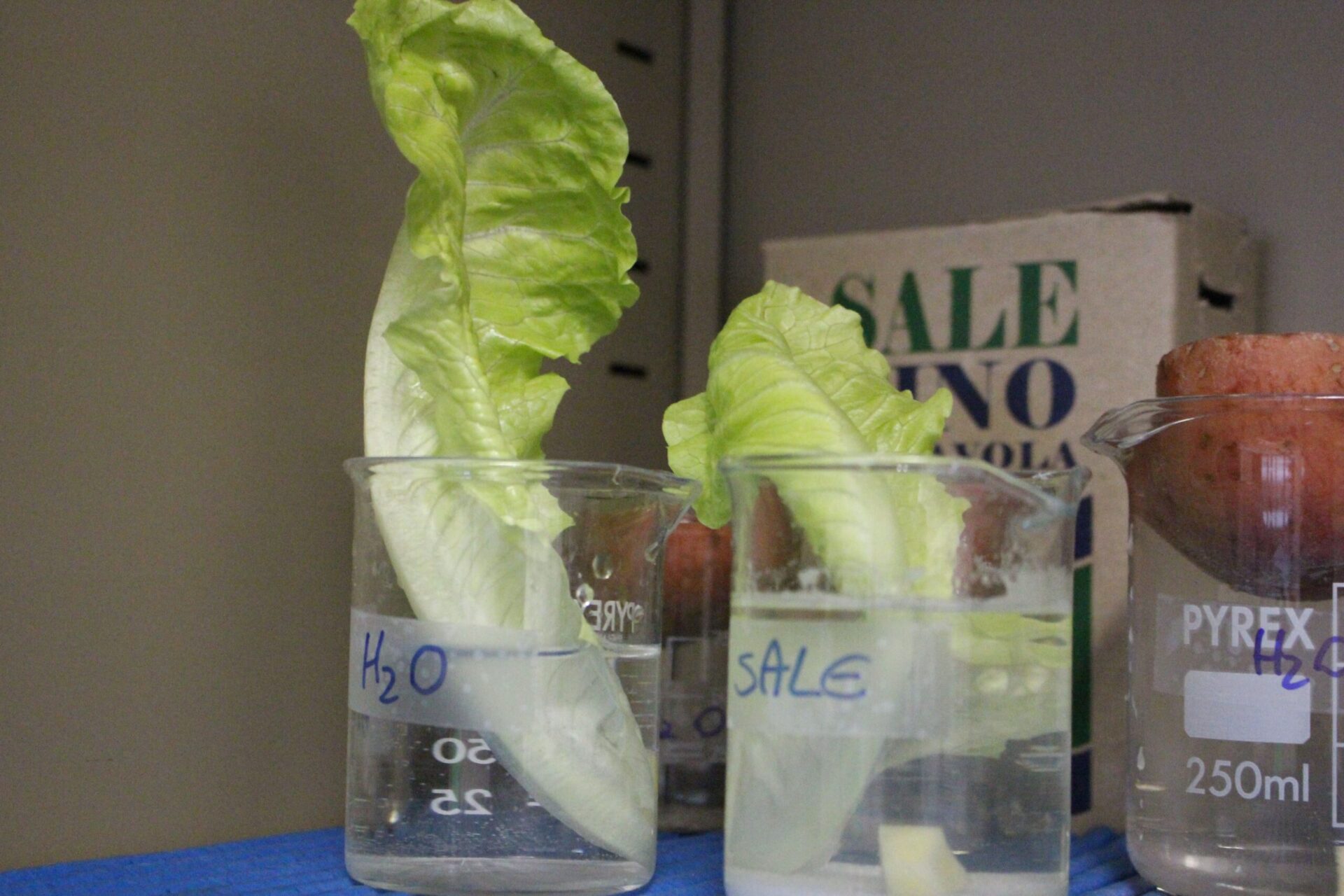
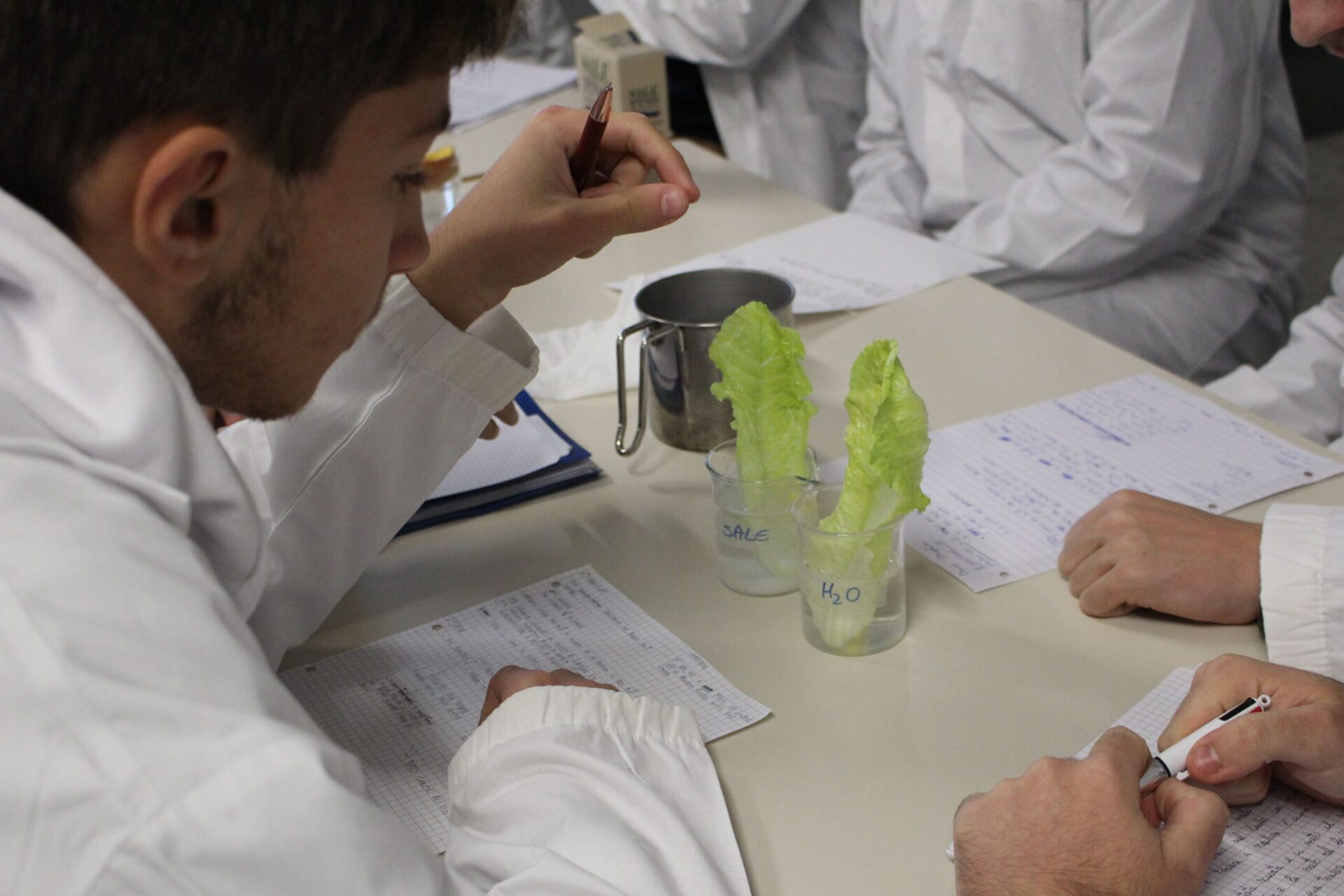
Sono usciti oggi i dati relativi all'indagine Eduscopio 2022, la ricerca della Fondazione Agnelli che monitora gli Istituti che preparano al meglio gli Studenti all'Università e al mondo del lavoro.
La nostra Scuola si è posizionata al secondo posto tra i Licei Linguistici paritari e al quinto posto tra i Licei Scientifici paritari della nostra città.
Siamo davvero felici di questo risultato!
Risultati-eduscopio-2022-scuole-paritarieChi non ha mai sentito la frase: “NULLA SI CREA, NULLA SI DISTRUGGE, TUTTO SI TRASFORMA”?
E’ la prima delle tre leggi ponderali formulata nel 1774 dal chimico francese Antoine Lavoisier.
Scientificamente parlando la legge suona più o meno così: “la somma in massa dei reagenti è sempre uguale alla somma in massa dei prodotti” I ragazzi del 1° Liceo Scientifico hanno dimostrato la veridicità di questa importante legge utilizzando un palloncino, aceto e bicarbonato di sodio osservando che sì, Monsier Lavoisier aveva proprio ragione!!
In 1774 the French chemist Antoine Lavoisier performed experiments proving the law of conservation of mass. This law states that in a chemical reaction, matter cannot be created or destroyed, but it can change forms. That means that the mass of all reactants in a reaction will be equal to the mass of all the products. Our first year Scientific High School students proved this law to be true using some simple materials, a balloon, vinegar, and baking soda. As the reaction took place the gas created moved from the flask into the balloon. Exactly as the law states, they discovered that even though mass may change forms in a chemical reaction the matter is neither created or destroyed.
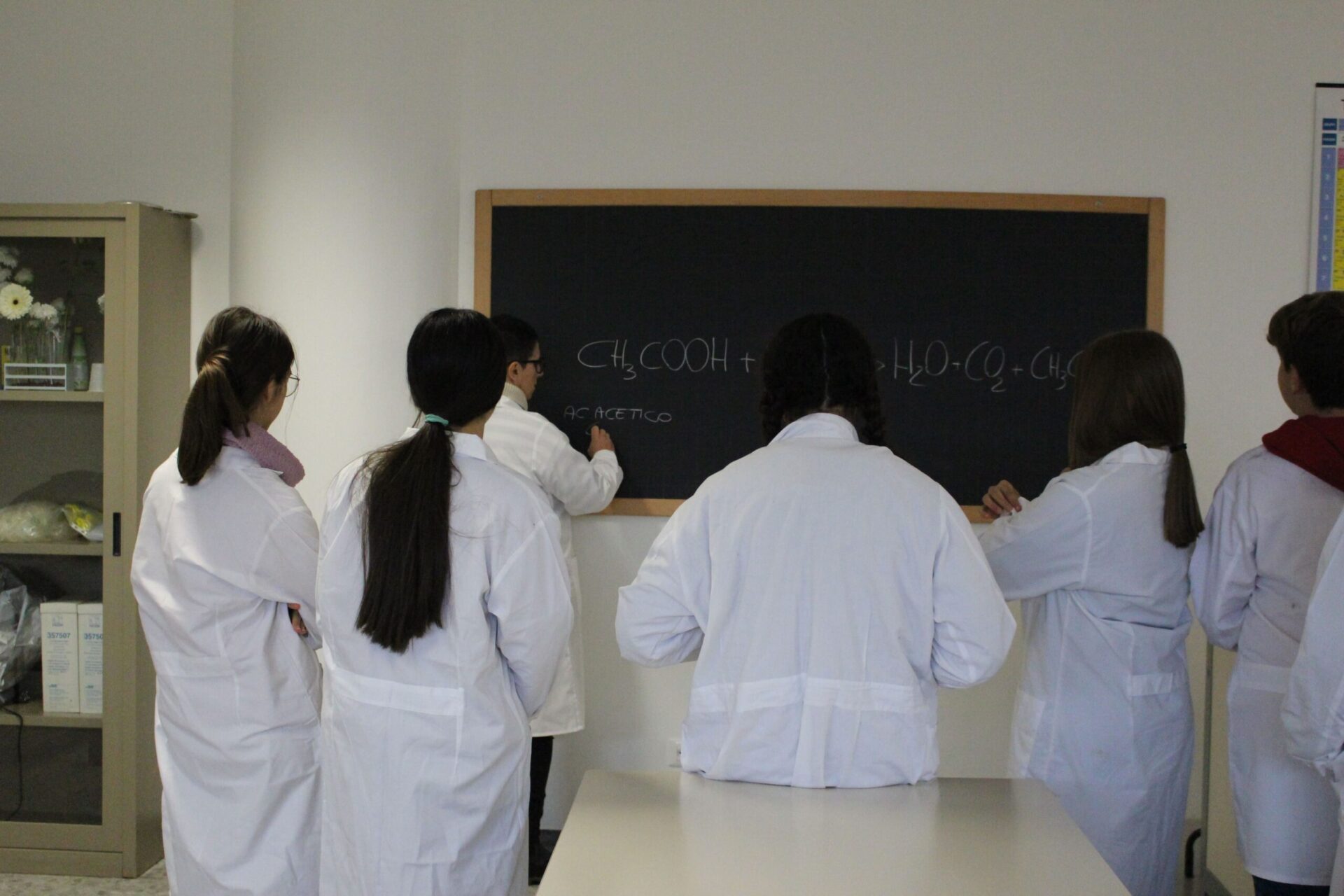
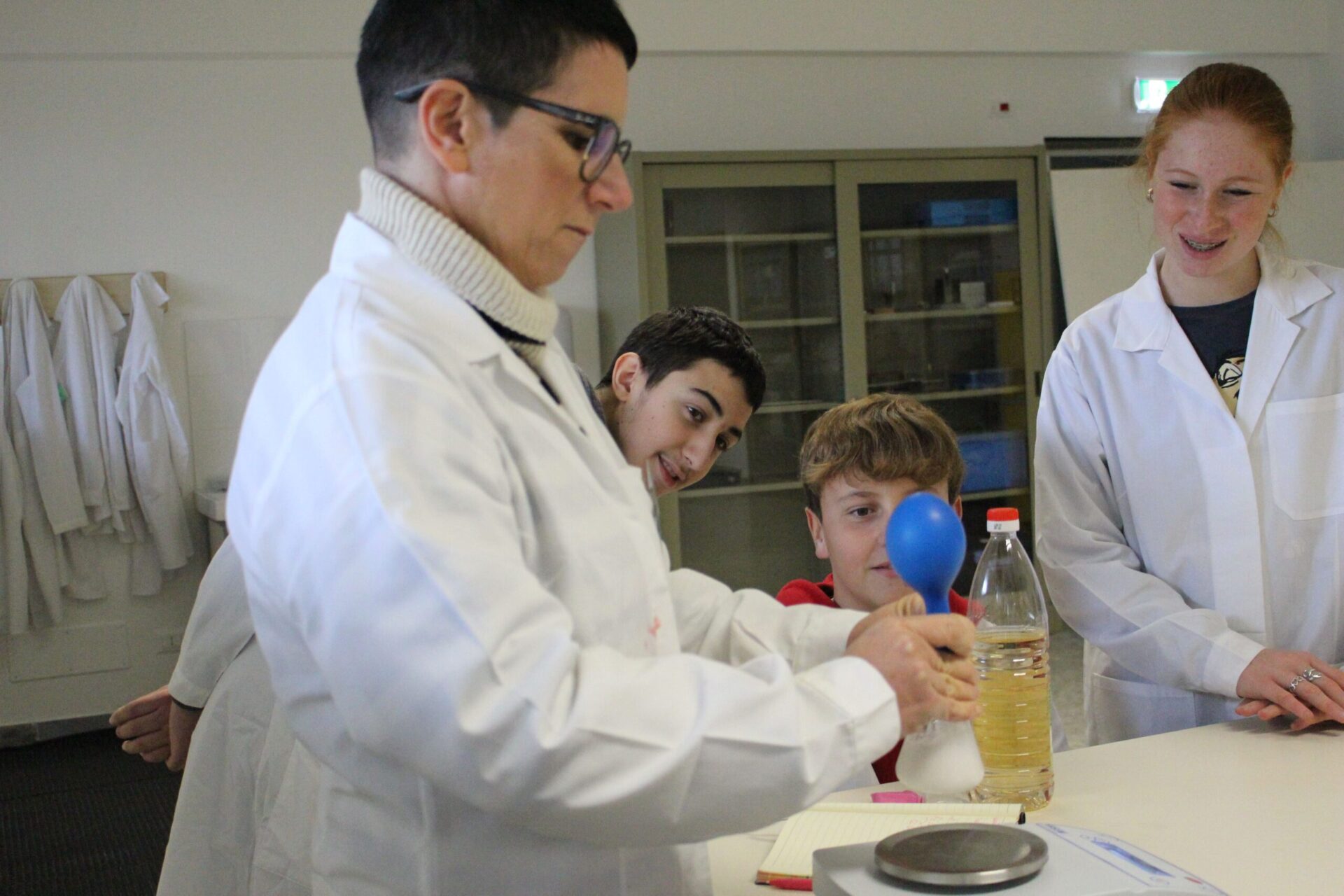
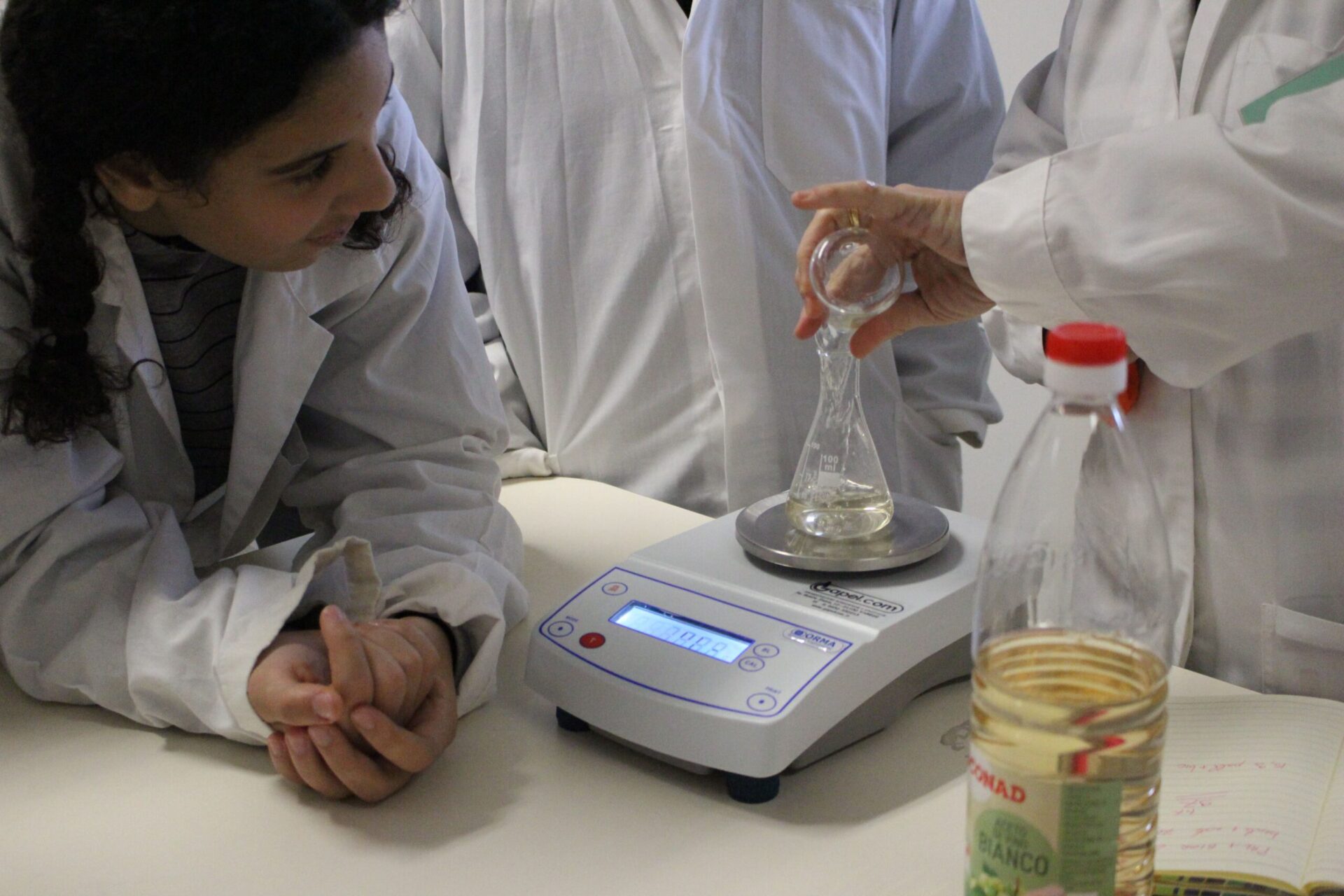
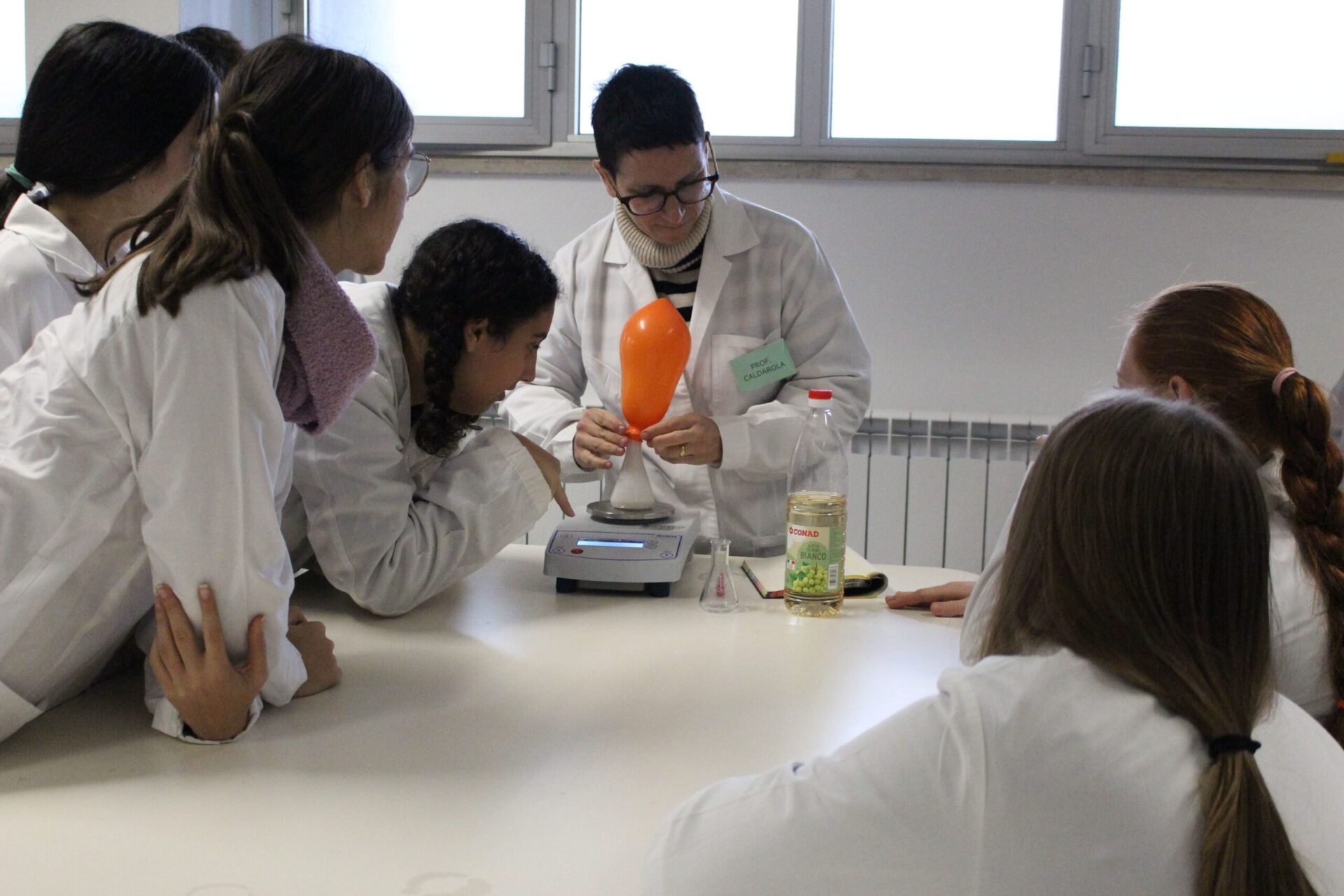
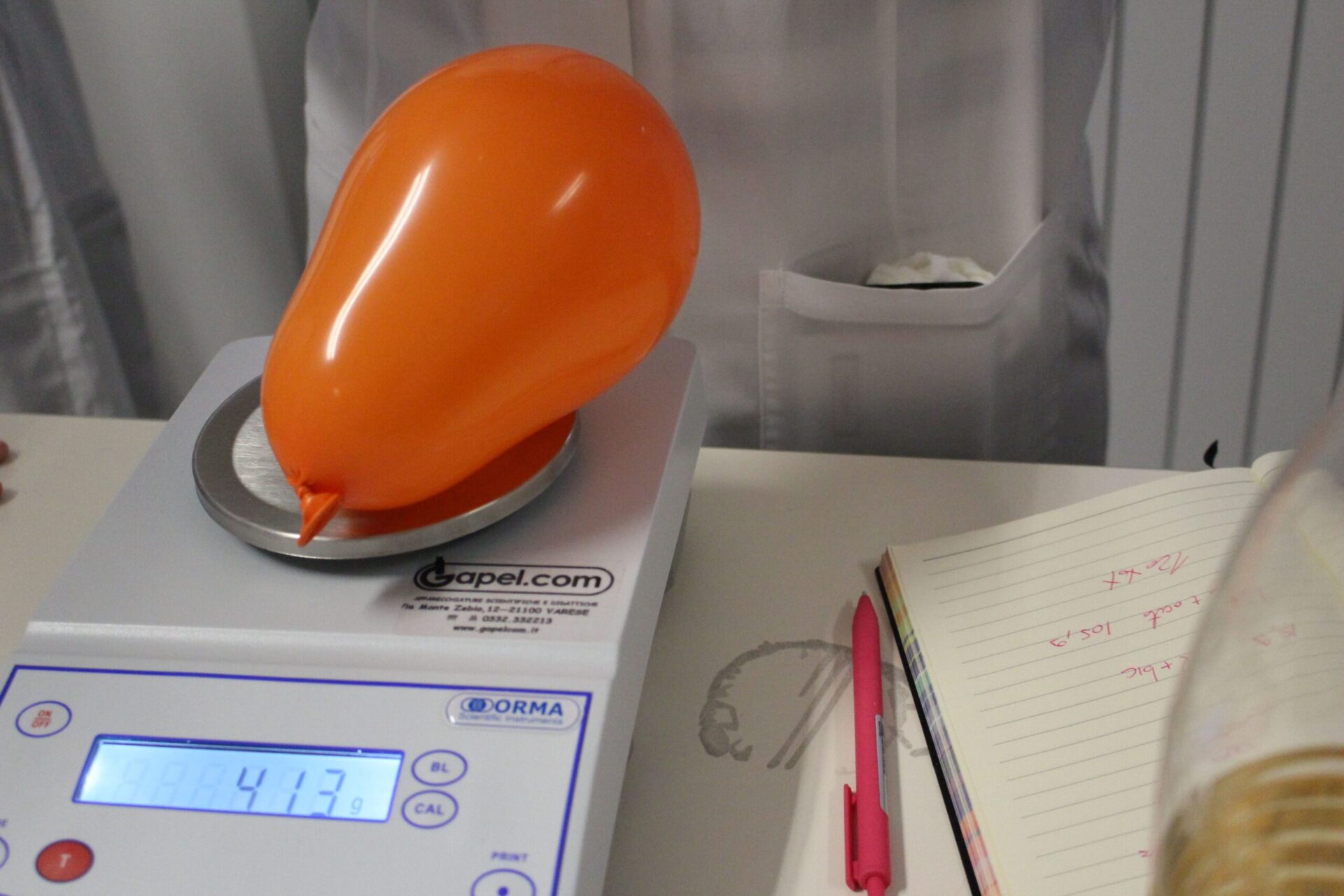
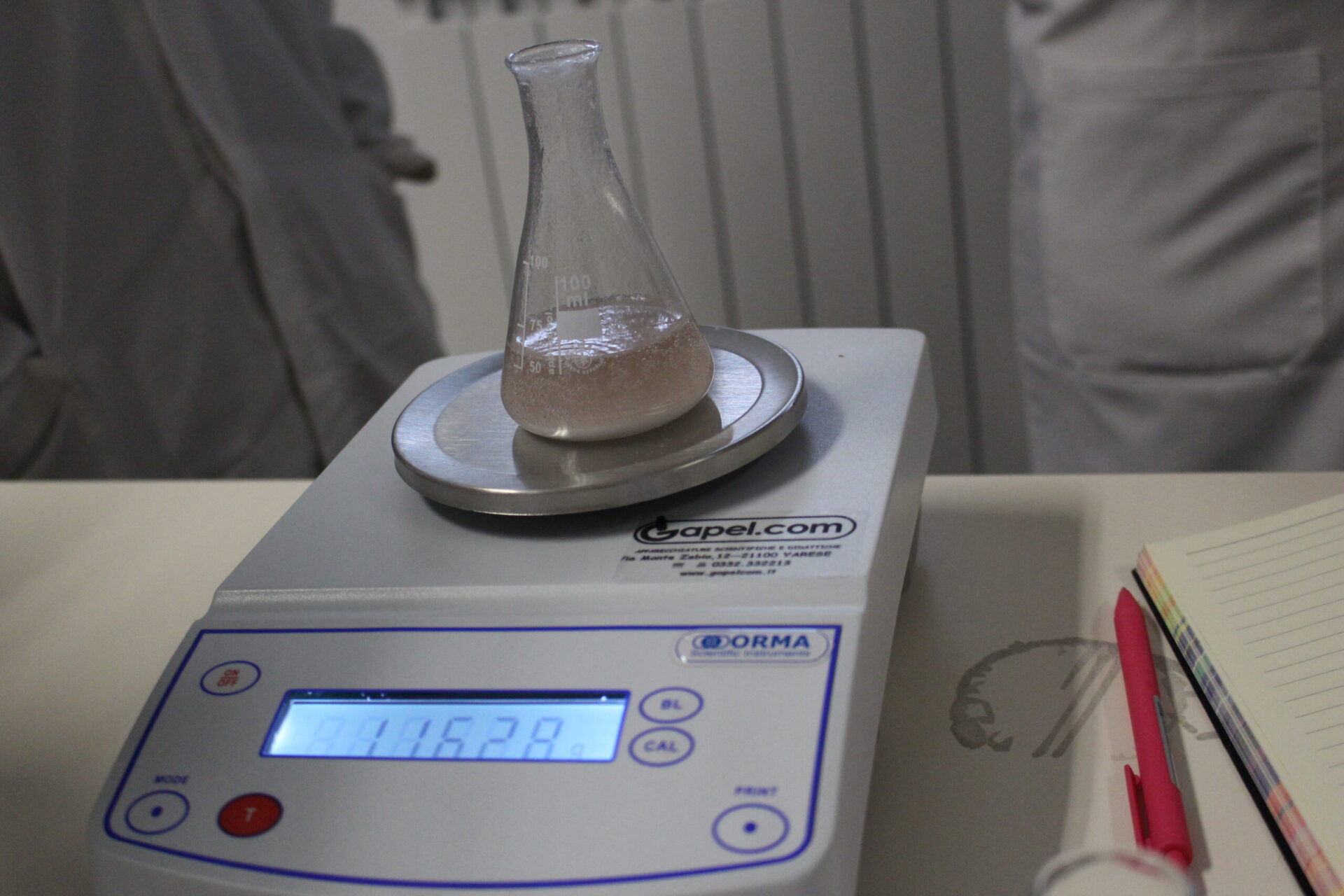
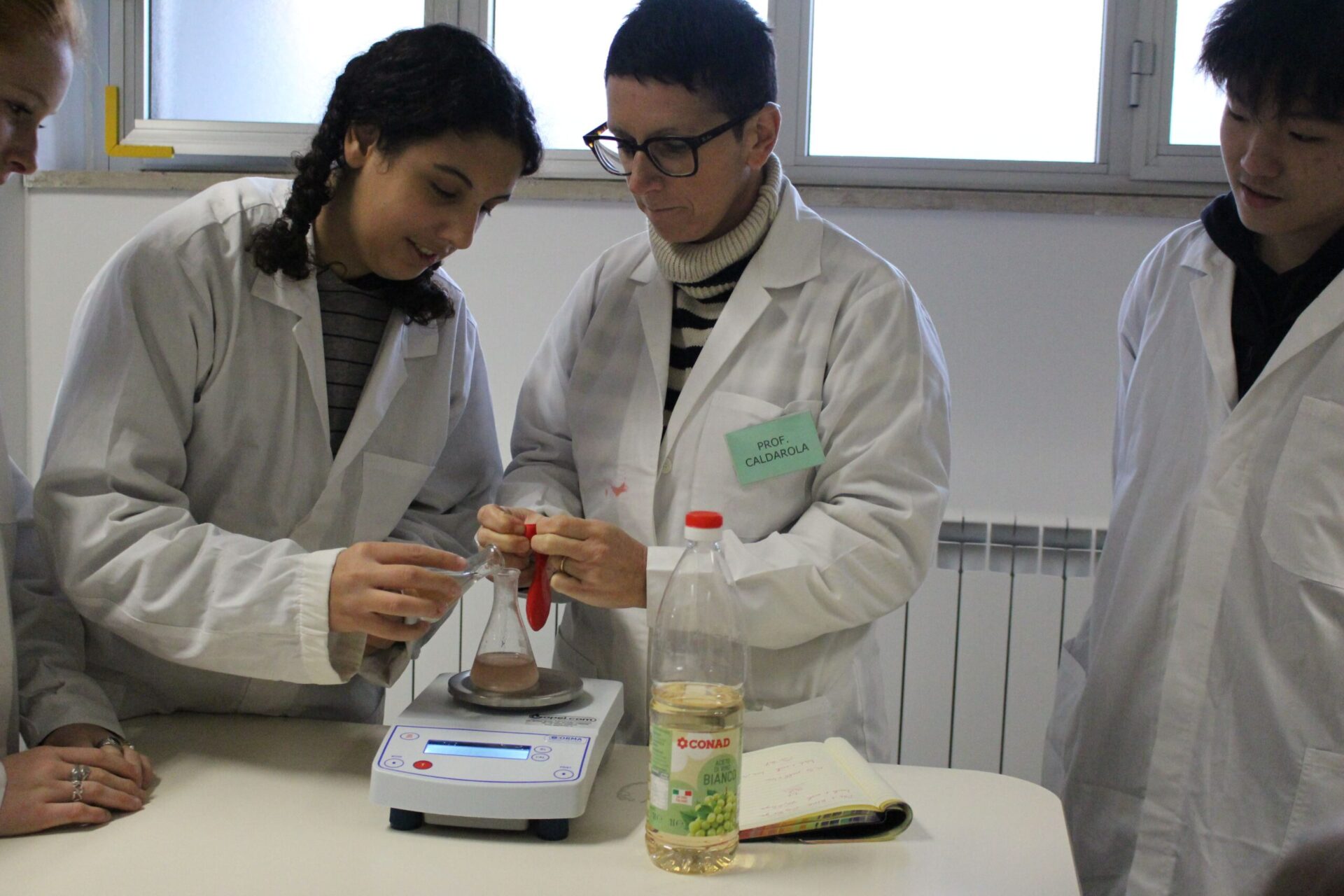
I ragazzi del 5° Liceo Scientifico hanno trattato con Lugol, un composto contenente Iodio, pezzetti di zucchine, melanzane, formaggio, pane, castagne, patate, mela e biscotti. Lo Iodio, intercalandosi nella struttura elicoidale dell’amido, cambia colore e da rosso diventa blu scuro. L’analisi del viraggio del colore permette quindi di rilevare la presenza o meno dell’amido in tutti gli alimenti analizzati.
Our brilliant 5th year Scientific High School biologists in training put a variety of foods to the starch test. In order to identify starchy foods, they employed a testing technique which uses iodine to detect foods containing starches. When the iodine comes in contact with starchy foods it automatically turns a blue/black colour. Our students tested a variety of foods such as zucchini, biscuits, eggplant, bread, chestnuts, apples and of course potatoes. Take a look at their results.
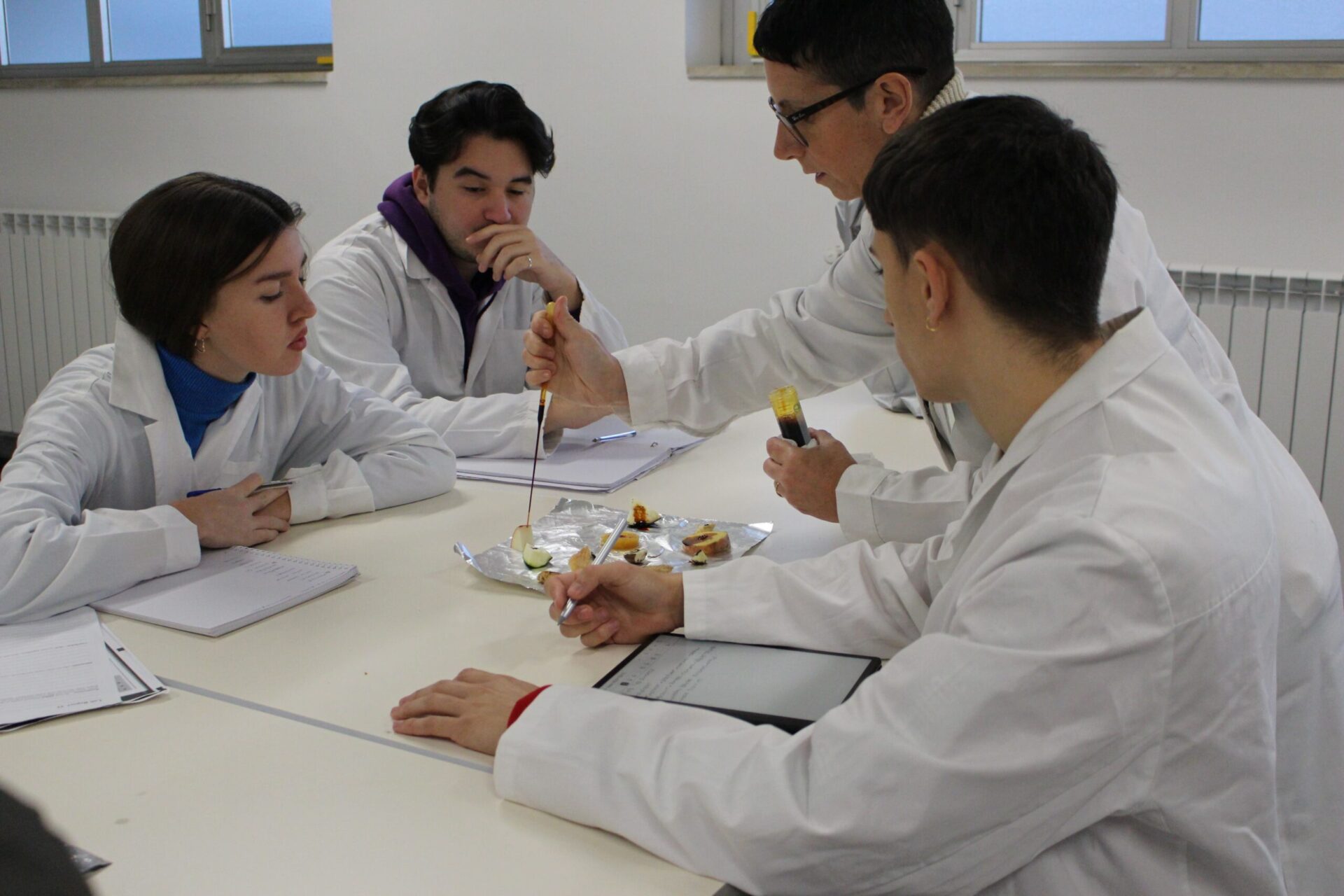
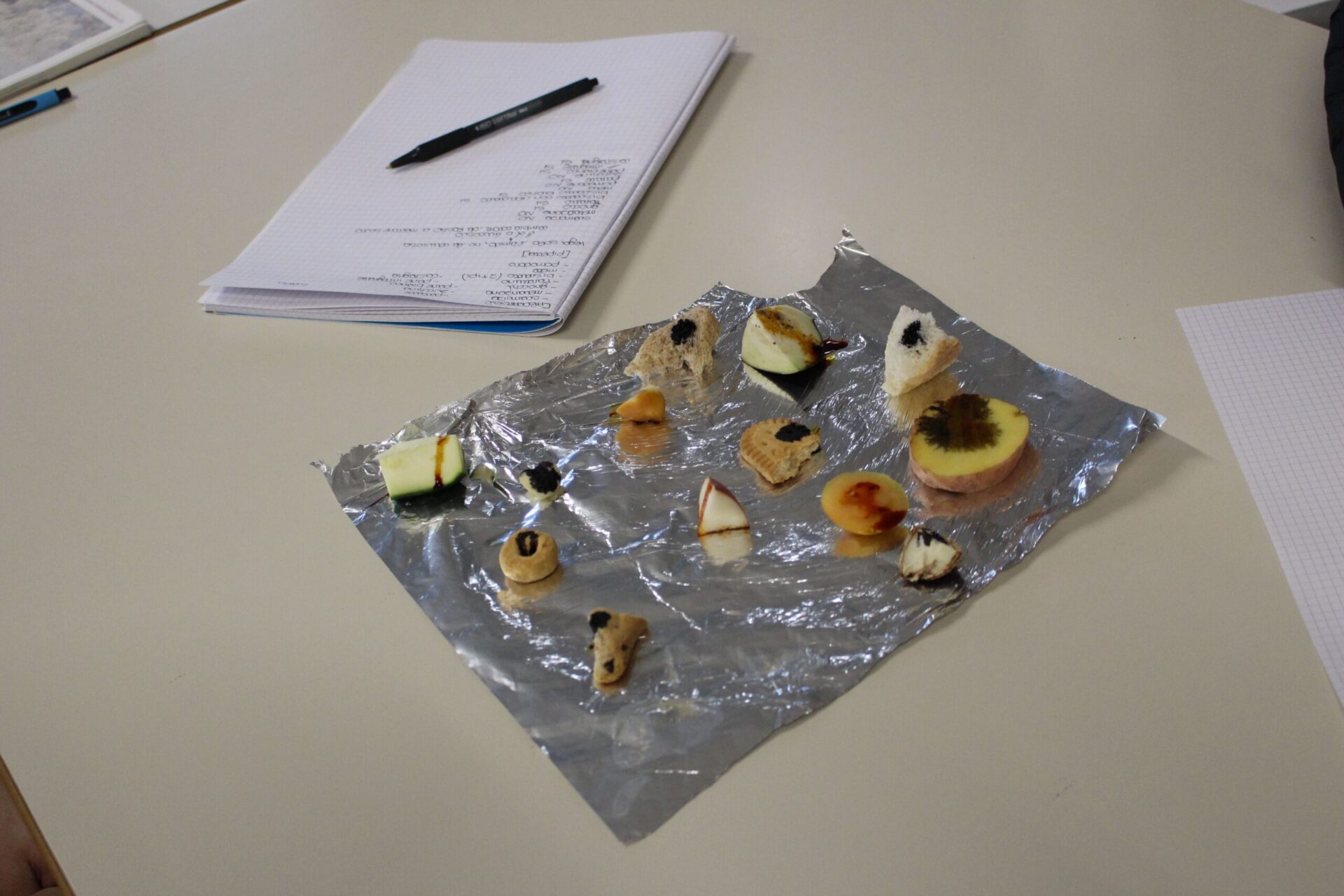
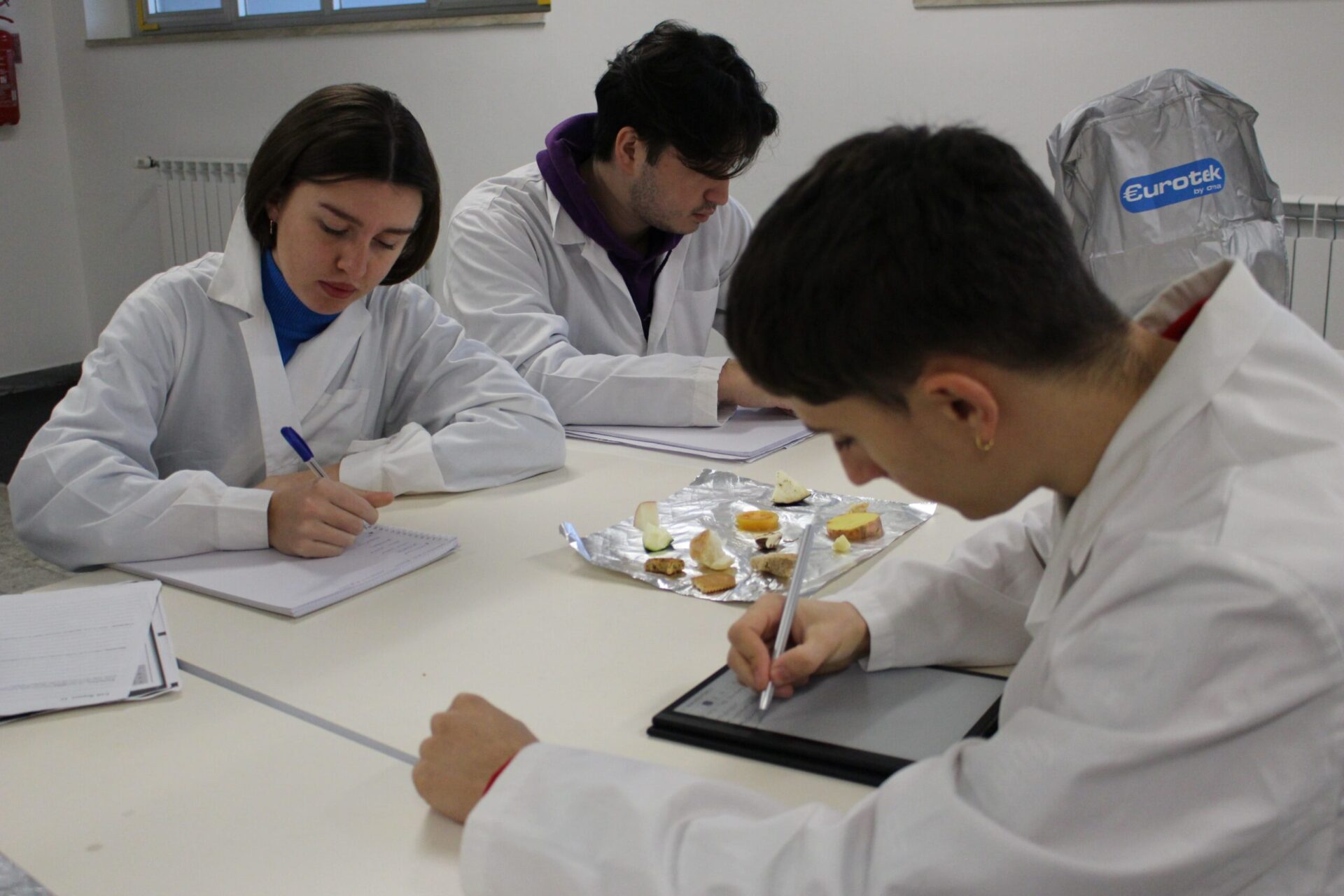
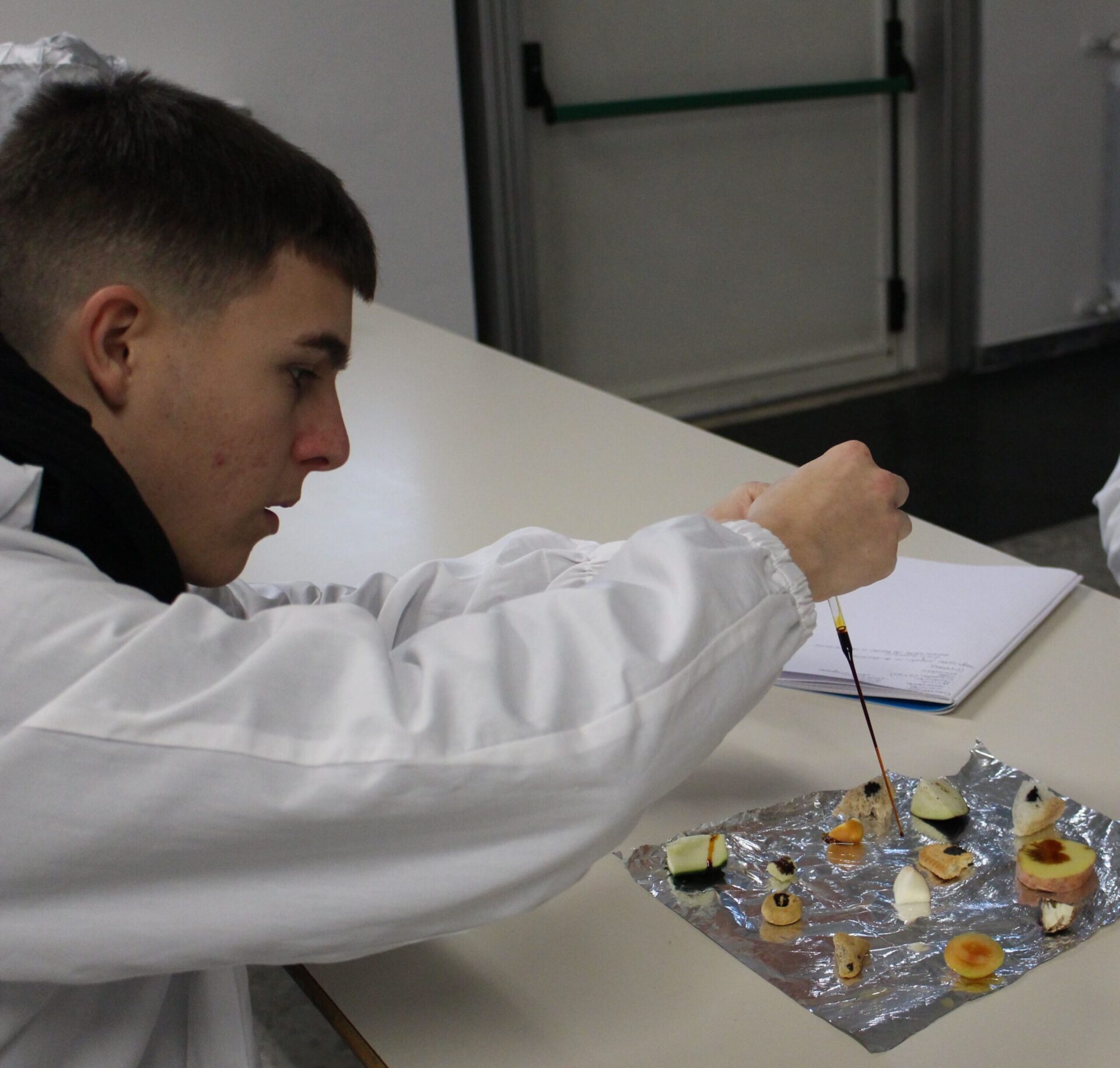
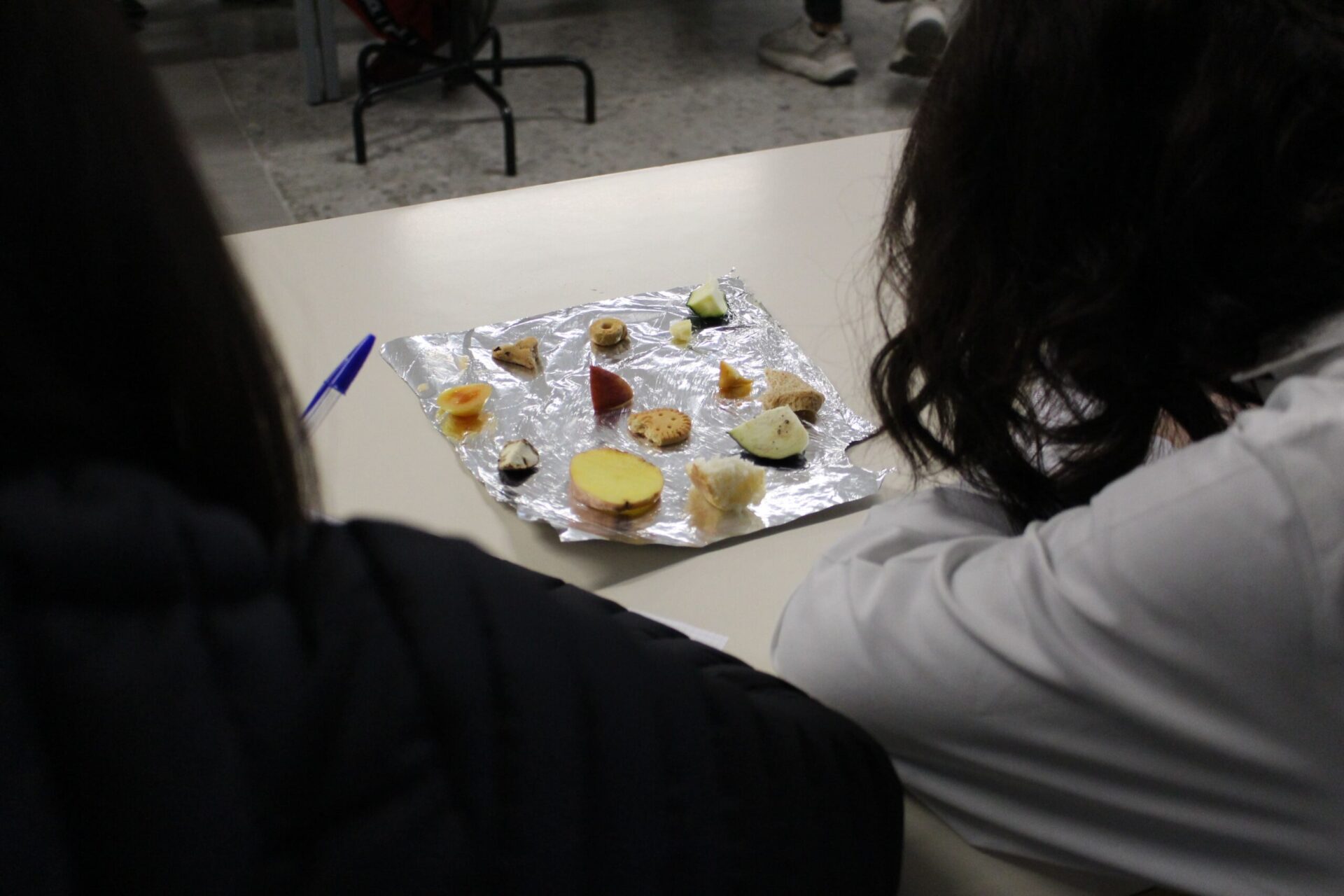
Gli sportelli didattici del mese di dicembre 2022 sono online! Di seguito i link dei diversi ordini scolastici. È possibile iscriversi attraverso il registro elettronico.
SPORTELLI DIDATTICI LICEO LINGUISTICO EUROPEO
SPORTELLI DIDATTICI LICEO SCIENTIFICO ENGLISH +
SPORTELLI DIDATTICI SCUOLA SECONDARIA DI I GRADO
Education is the best way to fight violence against women! Our first year Scientific High School students are currently learning about Agenda 2030. In recognition of The International Day for the Elimination of Violence Against Women, observed on the 25th of November, we made some time to focus specifically on Goal #5, Gender Inequality.
Our students considered various commonly held stereotypes/beliefs regarding men and women and expressed their opinions. In small groups they participated in a collaborative project, reading stories regarding women in difficult situations, working together to try to identify the issues behind each problem and reflect on both the causes and some possible solutions. We’re proud of our students’ ability to open their minds and hearts to challenging situations.
L'educazione è il modo migliore per combattere la violenza contro le donne! I nostri studenti del primo anno del liceo scientifico stanno studiando l'Agenda 2030. Il 25 Novembre, nella Giornata internazionale per l'eliminazione della violenza contro le donne, abbiamo dedicato del tempo all’approfondimento dell'obiettivo n. 5: la disuguaglianza di genere.
I nostri studenti hanno preso in considerazione vari stereotipi riguardanti uomini e donne e hanno espresso le loro opinioni. In piccoli gruppi hanno partecipato a un progetto collaborativo, leggendo storie di donne in situazioni difficili, lavorando insieme per cercare di individuare l'origine dei problemi e riflettere sia sulle cause sia su alcune possibili soluzioni. Siamo orgogliosi della capacità dei nostri studenti di aprire le loro menti nella comprensione di situazioni difficili.
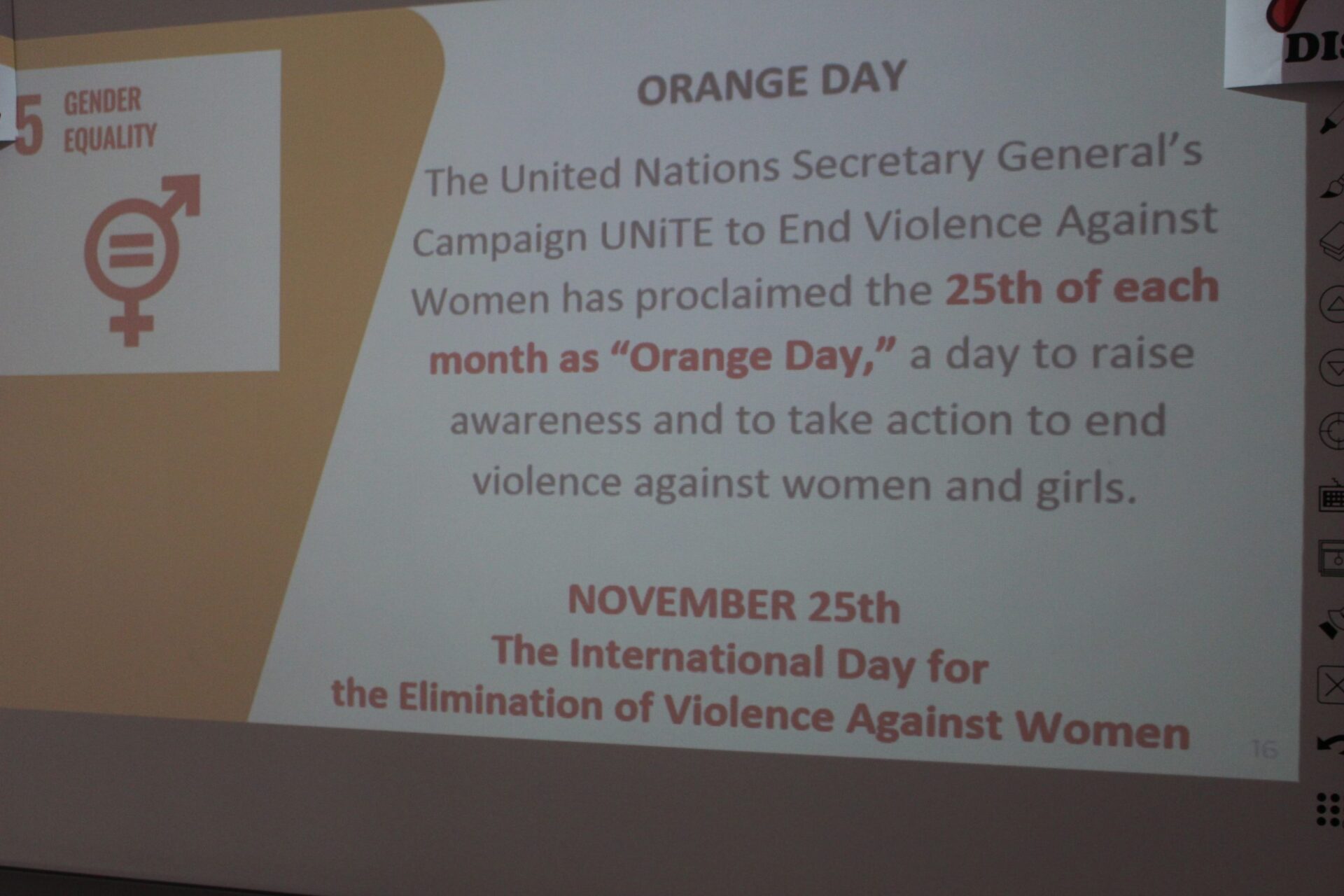
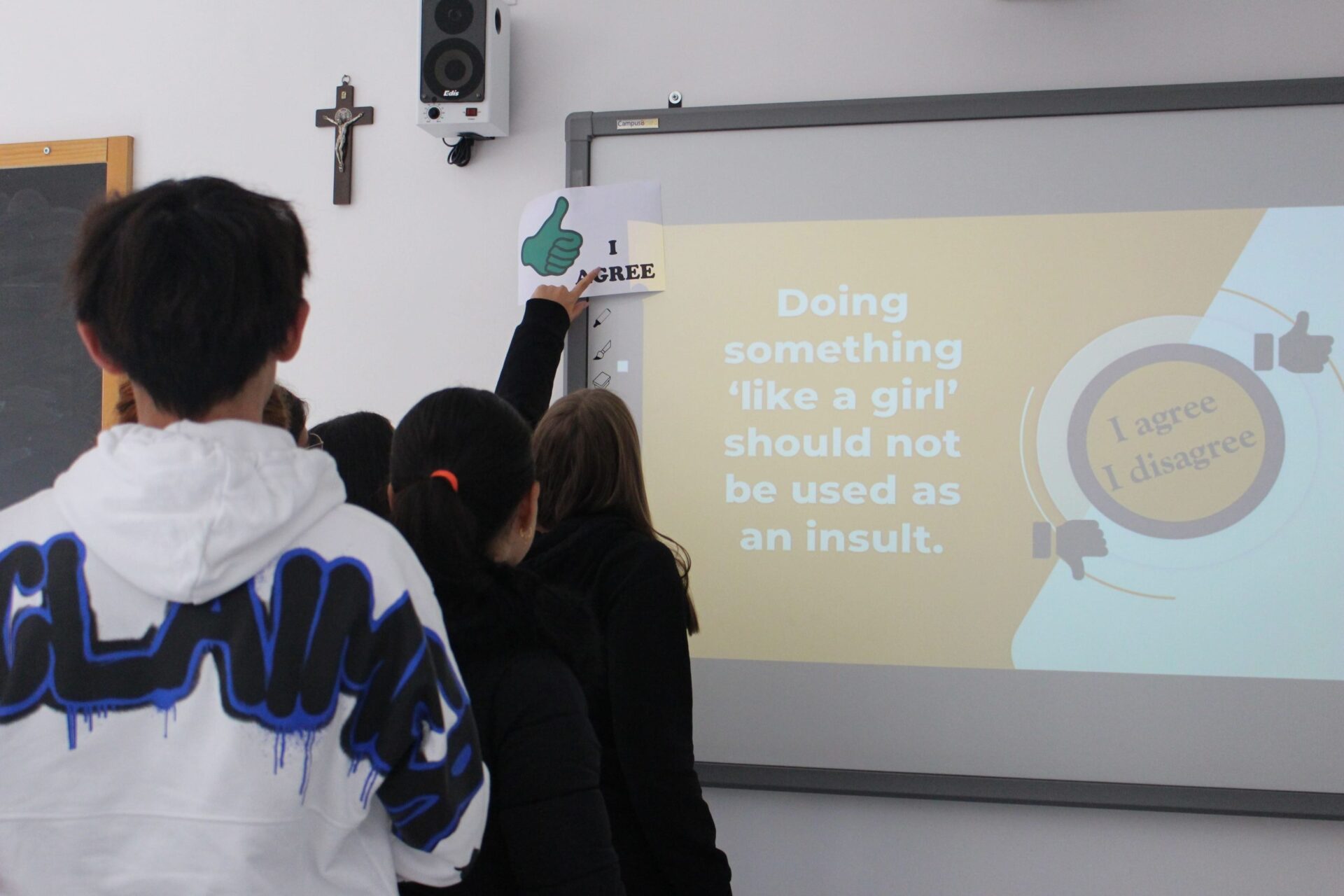
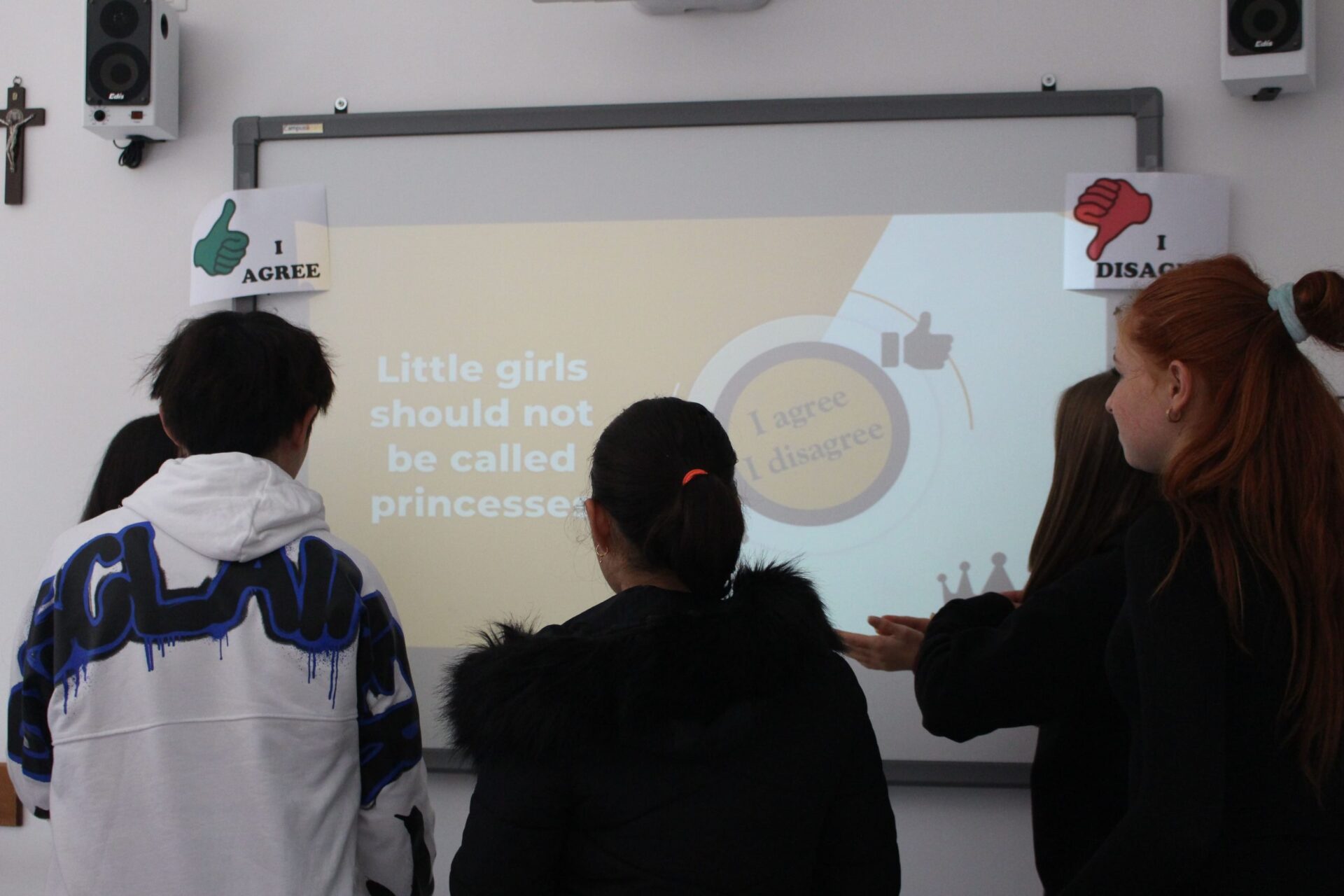
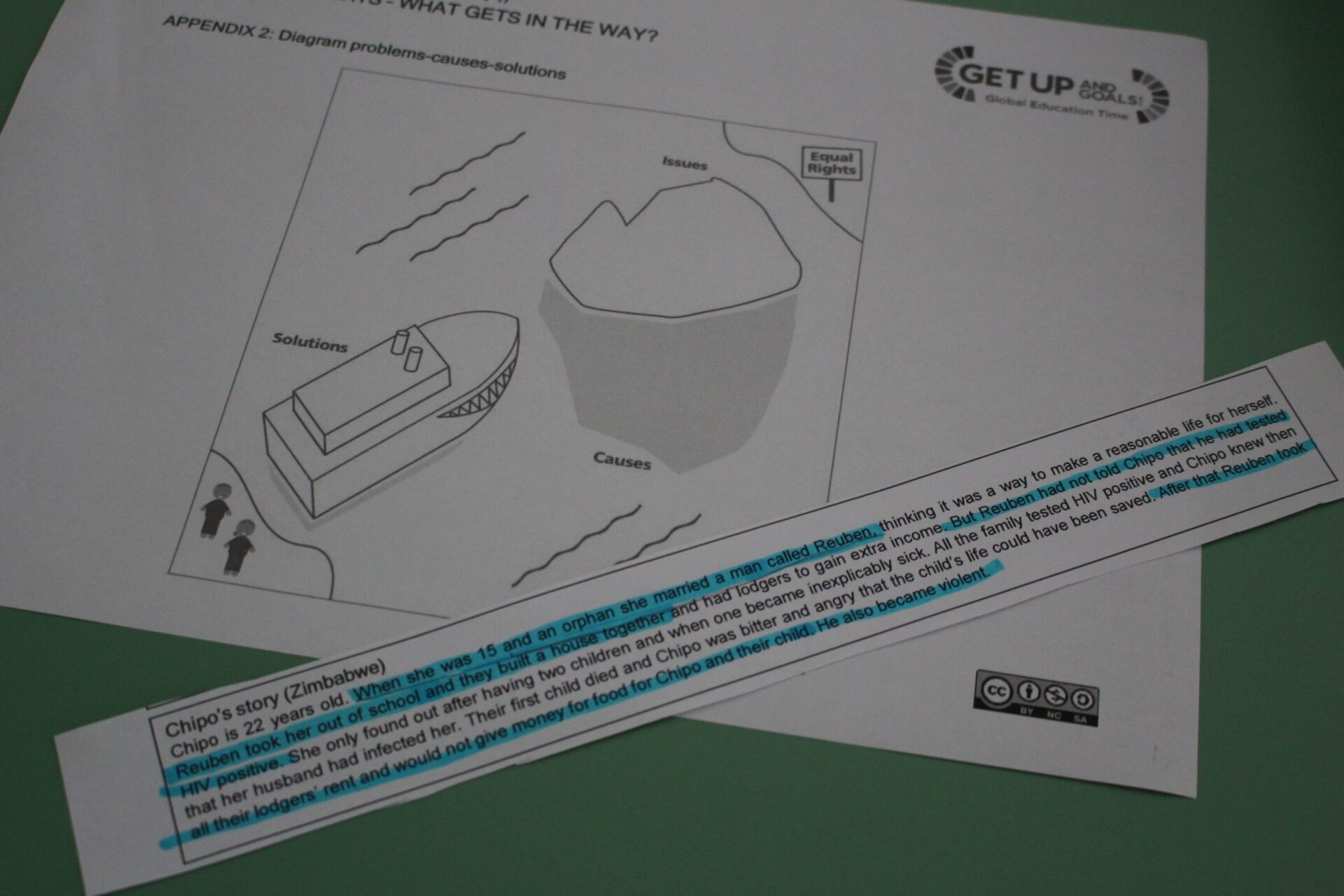
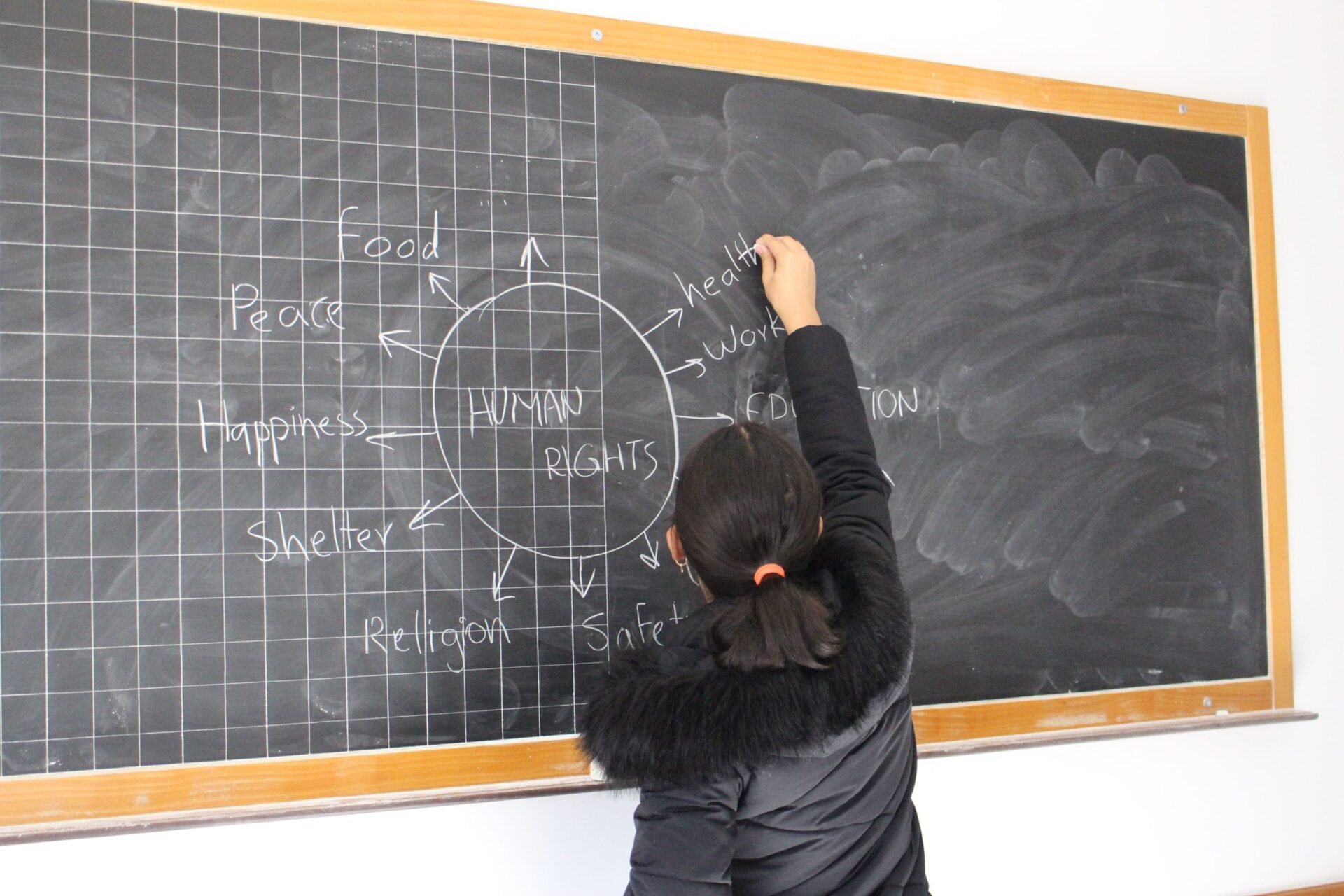
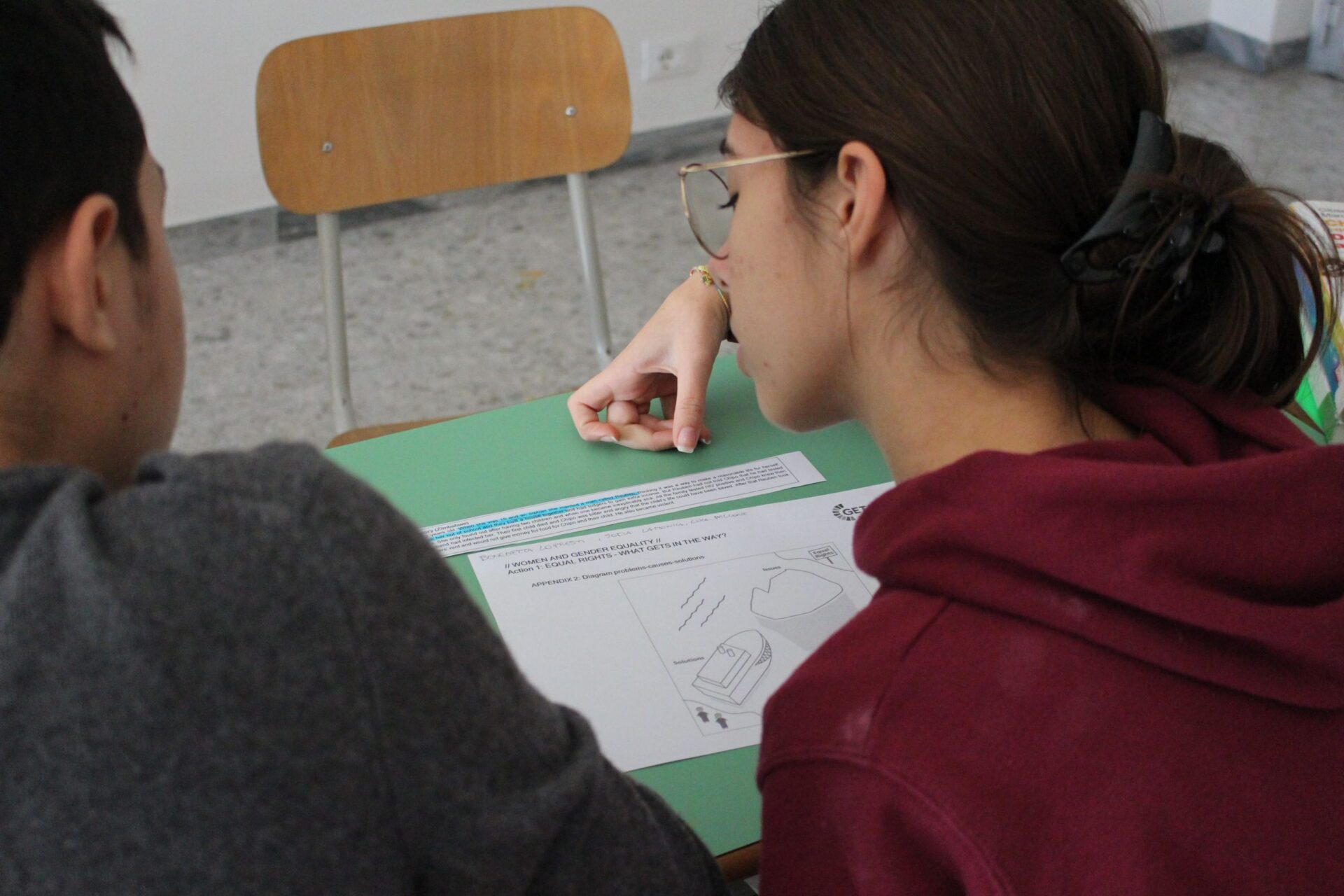
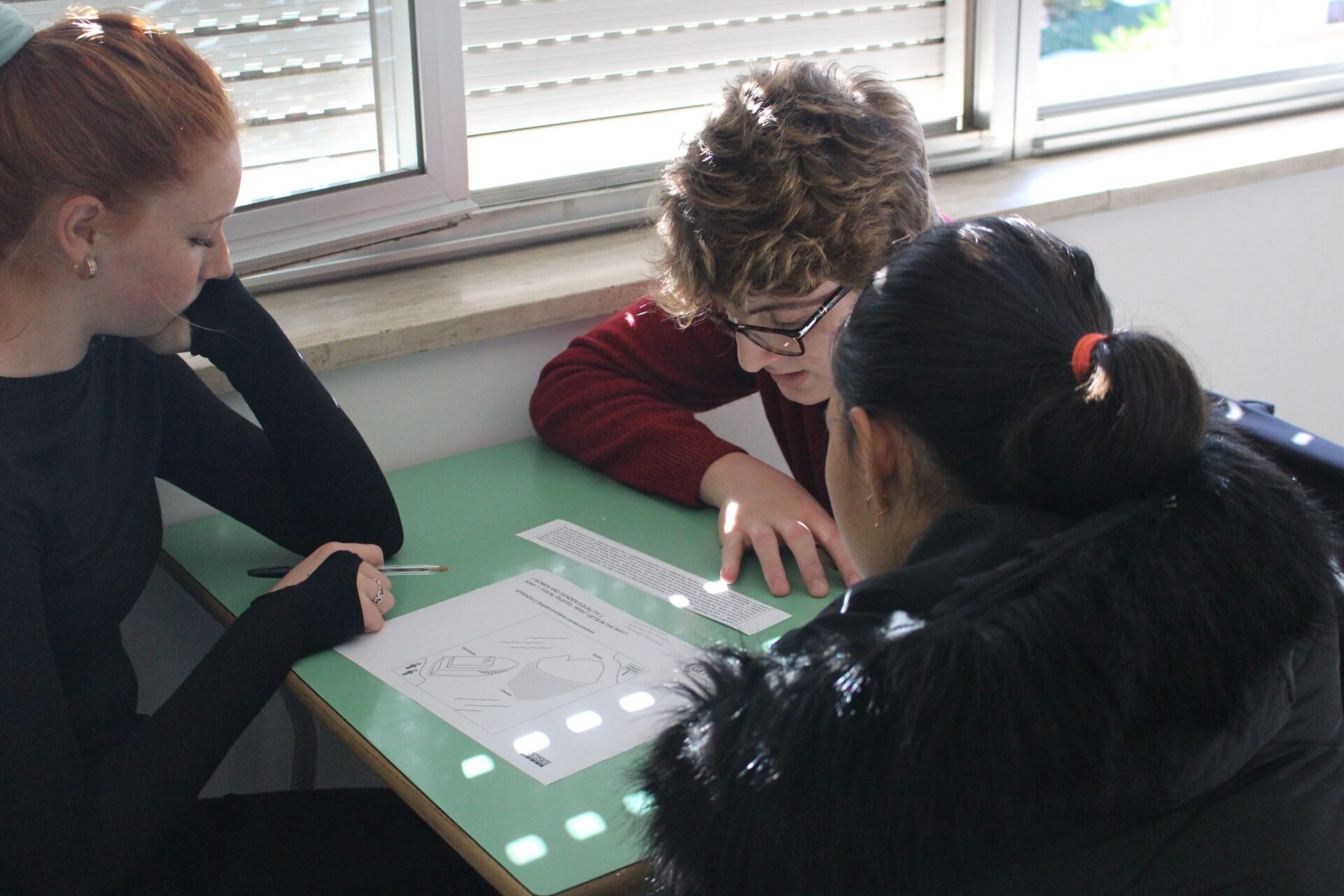
In 1917 at the height of World War I, the Zimmermann Telegram, a coded message about attacking the US became both, a coup for British intelligence, and a strong motivating factor, for the then neutral US to
enter WWI on the side of the Allied Powers.
Thanks to their interception capabilities, Britain's code-breakers intercepted and decoded the message,
which proposed an alliance between Germany and Mexico, promising in exchange the return of American
territory (New Mexico, Arizona and Texas) to Mexico.
Our fifth year Scientific High School students exercised their decoding abilities to reveal the details
contained in the actual Zimmermann telegram.
Nel 1917, al culmine della prima guerra mondiale, lo Zimmermann Telegram, un messaggio in codice sull'attacco agli Stati Uniti, divenne sia un colpo di stato per l'intelligence britannica, sia un forte fattore motivante, per gli allora neutrali Stati Uniti, a entrare nella prima guerra mondiale a fianco dell’Intesa.
Grazie alle loro capacità di intercettazione, i decifratori britannici intercettarono e decodificarono il
messaggio, che proponeva un'alleanza tra Germania e Messico, promettendo in cambio la restituzione del territorio americano (New Mexico, Arizona e Texas) al Messico.
I nostri studenti del quinto anno del Liceo Scientifico hanno esercitato le loro capacità di decodifica per rivelare i dettagli contenuti nel vero e proprio telegramma di Zimmermann.
